

Essay on 75 Years of Indian Independence
Students are often asked to write an essay on 75 Years of Indian Independence in their schools and colleges. And if you’re also looking for the same, we have created 100-word, 250-word, and 500-word essays on the topic.
Let’s take a look…
100 Words Essay on 75 Years of Indian Independence
The journey of independence.
India has completed 75 years of independence, a journey that began on 15th August 1947. This period has been marked by significant growth and development, despite various challenges.
Post-Independence Era
Initially, India faced numerous issues like poverty and illiteracy. The leaders worked hard to uplift the country, focusing on education, infrastructure, and health.
Economic Progress
India has made remarkable economic progress. It’s now one of the fastest-growing economies, with advancements in technology, space research, and various industries.
Cultural Preservation
Despite modernization, India has managed to preserve its rich cultural heritage, showcasing its diversity to the world.
Looking Ahead
As India steps into the next 75 years, the aim is to build an inclusive, prosperous nation, ensuring a better future for all.
250 Words Essay on 75 Years of Indian Independence
Introduction.
India, a nation with a rich history, diverse culture, and a promising future, celebrated 75 years of independence in 2021. This milestone marks a journey of resilience, development, and transformation, which is worthy of reflection and celebration.
Post-Independence Struggles
The initial years following independence were marked by the daunting task of nation-building. The partition of India and Pakistan led to large-scale violence, displacement, and socio-economic challenges. The nascent government had to formulate a constitution, establish institutions, and ensure social justice amidst this chaos.
Progressive Developments
Over the years, India has made significant strides in various fields. The Green Revolution transformed the agricultural landscape, making India self-sufficient in food grains. The IT revolution positioned India as a global hub for technology and services. India’s space program, ISRO, has achieved remarkable feats, including the successful Mars Orbiter Mission.
Challenges and the Way Forward
Despite these accomplishments, India still grapples with issues such as poverty, illiteracy, and corruption. The economic disparity is a pressing concern that needs to be addressed. However, with the advent of digital technology and initiatives like Digital India, there is hope for a more inclusive and equitable future.
The 75 years of Indian independence is a saga of triumph, resilience, and constant evolution. The journey has been challenging, but the progress made is commendable. As we look forward to the future, the lessons from the past will guide India towards a prosperous and inclusive society.
500 Words Essay on 75 Years of Indian Independence
The dawn of independence.
India, a land of rich cultural heritage and diverse traditions, celebrated its 75th year of independence in 2021. This independence, achieved after a prolonged struggle against British rule, marked the beginning of a new era of self-governance, democracy, and socio-economic development. The journey from 1947 to the present day has been a saga of significant transformation and growth.
Post-Independence Challenges
The immediate aftermath of independence was a period of considerable challenges. The partition of the country into India and Pakistan led to widespread communal violence and a massive refugee crisis. The new nation was also faced with the task of integrating hundreds of princely states into the Indian Union. Despite these adversities, India managed to create a democratic system, which was a remarkable achievement considering the socio-economic conditions of the time.
Building a Democratic Republic
The adoption of the Constitution in 1950 laid the foundation for India as a democratic republic. The Constitution, which is the longest written constitution in the world, enshrines the principles of justice, liberty, equality, and fraternity. It established a parliamentary system of government, universal adult franchise, and a commitment to social justice and human rights.
Economic Development and Modernization
In the economic sphere, India embarked on a path of planned development with the establishment of the Planning Commission in 1950. The focus was on self-reliance and the development of key industries and infrastructure. Over the years, India has transitioned from an agrarian economy to a diversified one with substantial growth in sectors such as information technology, telecommunications, and services.
India on the Global Stage
India’s foreign policy, characterized by the principles of non-alignment and peaceful coexistence, has evolved over the years. India has played a significant role in international affairs, be it the fight against apartheid in South Africa or contributing to United Nations peacekeeping missions. Today, India is seen as a major global player with increasing influence in international forums.
The Road Ahead
As India celebrates 75 years of independence, it stands at a crucial juncture. While it has made significant strides in various spheres, challenges remain. Issues such as poverty, illiteracy, corruption, and environmental degradation need to be addressed. The vision for the future should be to build an inclusive, sustainable, and resilient India.
In conclusion, the journey of India since independence has been a story of resilience, transformation, and progress. The 75th year of independence is not just a milestone but a moment of reflection on the past and a vision for a brighter future. The onus is on the current generation to carry forward the legacy of the freedom fighters and work towards realizing the dream of a truly independent, prosperous, and inclusive India.
That’s it! I hope the essay helped you.
If you’re looking for more, here are essays on other interesting topics:
- Essay on Cultural Heritage of India
- Essay on Cultural Diversity in India
- Essay on Cashless India
Apart from these, you can look at all the essays by clicking here .
Happy studying!
Leave a Reply Cancel reply
Your email address will not be published. Required fields are marked *
Save my name, email, and website in this browser for the next time I comment.

भारत सरकार GOVERNMENT OF INDIA
संस्कृति मंत्रालय MINISTRY OF CULTURE
- Azadi Scientists
- Stories of Change
- Competitions
- Districtwise narratives of our splendid heritage
- Paying tribute to India’s freedom fighters
- Public Contribution Portal
- Revolutionary poetry banned during the British Raj
- Zara Yaad Karo Qurbani
- Melodic identity of our States
- Stories of India’s Freedom Struggle
- Unity Festival

Participation in Competitions
Events Published
Unsung Heroes Celebrated
Azadi Ka Amrit Mahotsav
Azadi Ka Amrit Mahotsav is an initiative of the Government of India to celebrate and commemorate 75 years of independence and the glorious history of its people, culture and achievements.
This Mahotsav is dedicated to the people of India who have not only been instrumental in bringing India thus far in its evolutionary journey but also hold within them the power and potential to enable Prime Minister Narendra Modi's vision of activating India 2.0, fuelled by the spirit of Aatmanirbhar Bharat.
The official journey of Azadi Ka Amrit Mahotsav commenced on 12th March 2021 which started a 75-week countdown to our 75th anniversary of independence and will end post a year on 15th August 2023. Following are the five themes of Azadi Ka Amrit Mahotsav.
- Freedom struggle
Achievements@75
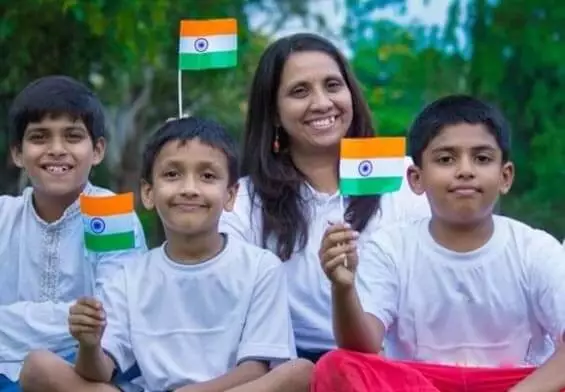
As we countdown to 15th August 2023, Azadi Ka Amrit Mahotsav aims to further boost this peoples’ movement through collaborative campaigns and outreach across India and the world. This evolution has led to the creation of nine new themes under Azadi Ka Amrit Mahotsav, each aligned with the ‘Panch Pran’ announced by Hon’ble Prime Minister during Independence Day 2022.
As we countdown to 15th August 2023, Azadi Ka Amrit Mahotsav aims to further boost this peoples’ movement through collaborative campaigns and outreach across India and the world. Following campaigns are on the lines of nine critical themes aligned with the ‘Panch Pran’ announced by Hon’ble Prime Minister: Women and Children, Tribal Empowerment, Water, Cultural Pride, Lifestyle for Environment (LiFE), Health and Wellness, Inclusive Development, Aatmanirbhar Bharat and Unity.

Like the history of the freedom movement, the journey of 75 years after independence is a reflection of the hard work, innovation, enterprise of ordinary Indians. Whether in the country or abroad, we Indians have proved ourselves with our hard work. We are proud of our Constitution. We are proud of our democratic traditions. The mother of democracy, India is still moving forward by strengthening democracy. India, rich in knowledge and science, is leaving its mark from Mars to the moon.
Narendra Modi Prime Minister of India
The Azadi Ka Amrit Mahotsav means elixir of energy of independence; elixir of inspirations of the warriors of freedom struggle; elixir of new ideas and pledges; and elixir of Aatmanirbharta. Therefore, this Mahotsav is a festival of awakening of the nation; festival of fulfilling the dream of good governance; and the festival of global peace and development.
Meri Maati Mera Desh

Har Ghar Tiranga

Combined Creatives

Ongoing Iconic Events

Indian Art, Architecture, and Design Biennale 2023
Start Date December 8, 2023
End Date March 31, 2024
Organiser - Ministry of Culture
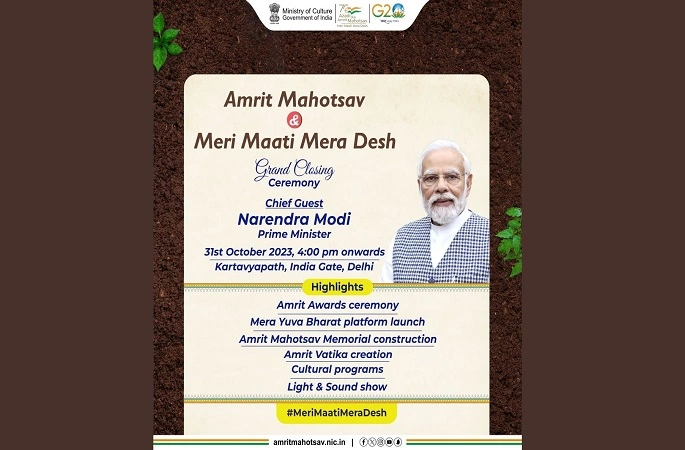
Start Date August 9, 2023
End Date October 31, 2023
Organiser - Ministry of Youth Affairs and Sports and Ministry of Culture
Freedom Struggle
Upcoming iconic events.

Grand Hologram Statue of Netaji

Spotlight of the Week
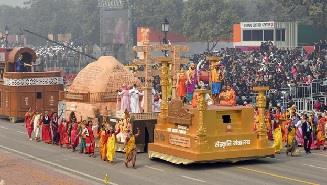
Ministry of Culture tableau clinches first spot at Republic Day ...

India Art, Architecture and Design Biennale 2023
Traditions & Art Forms

‘Meri Maati Mera Desh’ finale event to be held at Kartavya Path
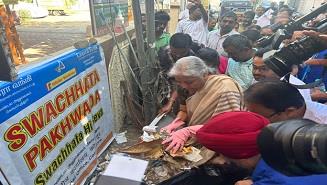
Over 100 Crore people participated in the ‘Swachhata Hi Seva’ Ca...

Prime Minister dedicates ‘Yashobhoomi’ to the nation
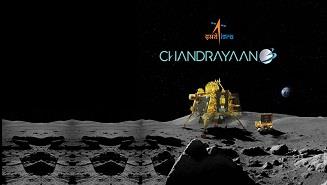
Chandrayaan-3: India creates history by being the first country ...
Five themes of azadi ka amrit mahotsav.
This theme anchors our commemoration initiatives under Azadi Ka Amrit Mahotsav. It helps bring alive stories of unsung heroes whose sacrifices have made freedom a reality for us and also revisits the milestones, freedom movements etc. in the historical journey to 15 August, 1947.
Programmes under this theme include Birsa Munda Jayanti (Janjatiya Gaurav Diwas), Declaration of Provisional Government of Free India by Netaji, Shaheed Diwas etc...

Celebration of Gandhi Jayanti at Quezon City
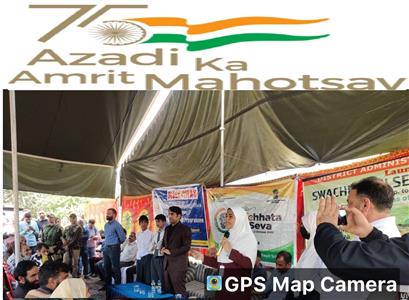
Jan Bhagidari Abhiyan at Sarband , Harwa...
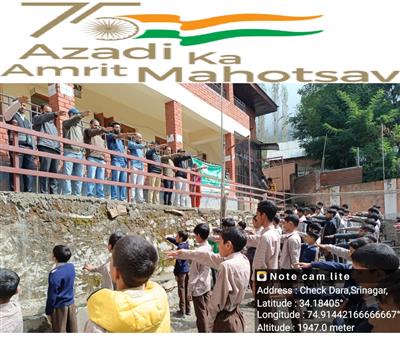
Panch Pran Pledge ceremony by Panchayat ...

Panch Pran Pledge held at Nowgam Panchay...
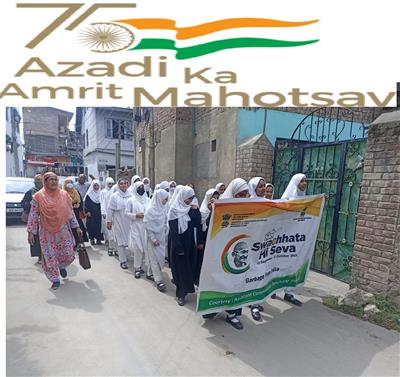
Mitti Yatra by Rural development Departe...
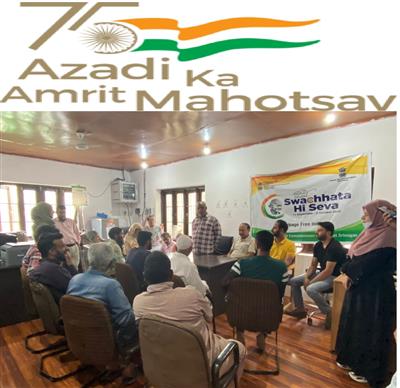
Veeron Ko Naman Program by Rural Develop...
This theme focuses on programmes and events inspired by ideas and ideals that have shaped us and will guide us as we navigate through this period of Amrit Kaal (25 years between India@75 and India@100). The world as we knew it is changing and a new world is unfolding. The strength of our convictions will determine the longevity of our ideas. Events and programmes under this theme include popular, participatory initiatives that help bring alive India’s unique contribution to the world. These include events and initiatives such as Kashi Utsav dedicated to Hindi literary luminaries from the land of Kashi, Post Cards to Prime Minister wherein more than...
This theme focuses on our collective resolve and determination to shape the destiny of our motherland. The journey to 2047 requires each one of us to rise up and play our part as individuals, groups, civil society, institutions of governance etc. Only through our collective resolve, well laid out action plans and determined efforts will ideas translate into actions. Events and programmes under this theme include initiatives such as Constitution Day, Good Governance Week etc. that help bring alive our commitment towards the ‘PLANET AND PEOPLE’ while being driven by a deep sense of PURPOSE...
This theme focuses on all the efforts that are being undertaken to help India take its rightful position in the new world order emerging in a post covid world by highlighting the steps being taken to implement policies and actualise commitments. It is driven by Prime Minister Modi’s clarion call of SABKA SAATH. SABKA VIKAS. SABKA VISHWAS, SABKA PRAYAS. It encompasses Government policies, schemes, action plans along with commitments from businesses, NGOs, civil society that help actualise our ideas and help us collectively create a better tomorrow. Programmes under this theme include initiatives such as Gati Shakti - National Master Plan for ...
This theme focuses on marking the passage of time and all our milestones along the way. It is intended to grow into a public account of our collective achievements as a 75-year-old independent country with a legacy of 5000+ years of ancient history.
Events and programmes under this theme include initiatives such as Swarnim Vijay Varsh dedicated to the victory of 1971, launch of Shreshtha Yojana during Mahaparinirvan Diwas etc...
Video Gallery
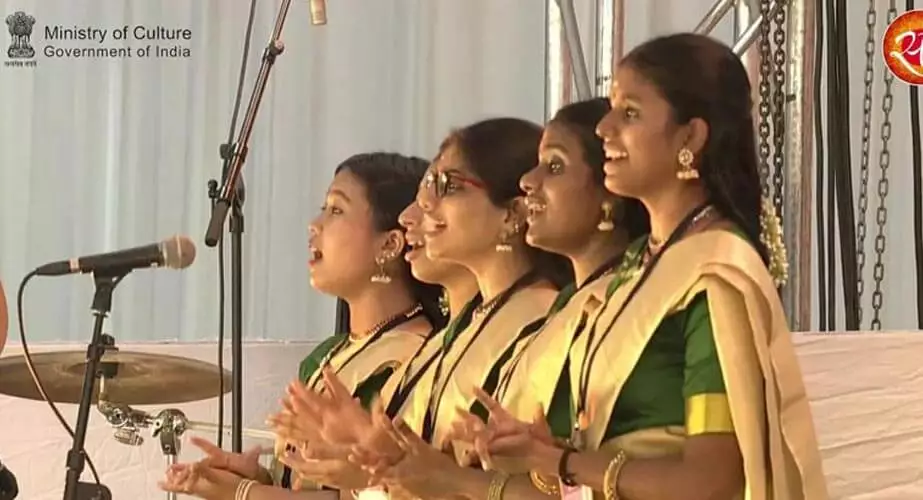
Act on Thaayin Manikodi Paareer
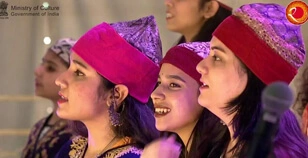
Soun Wattan by Saurabh Zadoo and Indian Harmonies...
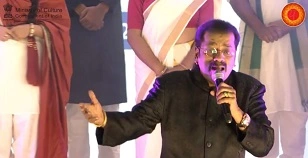
Vande Mataram By Padma Shri Hariharan...
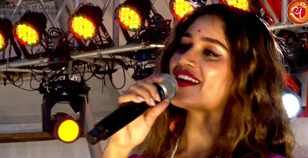
Jai Ho By Ustad Arshad Ali Khan, Pratibha Singh...
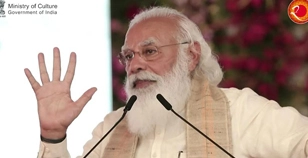
Hon'ble Prime Minister Shri Narendra Modi's...
Social Feeds

- भारत सरकार Government of India
- शिक्षा मंत्रालय Ministry of Education
- Skip to main content
- Skip to navigation

"Contribute your renderings on 'Desh Bhakti Geet writing','Lori writing' and 'Rangoli making'"
आज़ादी का अमृत महोत्सव | 75 years of india’s independence.
‘Azadi Ka Amrit Mahotsav’ is an initiative of the Government of India to celebrate and commemorate 75 years of independence of progressive India and the glorious history of its people, culture and achievements.
The Prime Minister, Shri Narendra Modi inaugurated the ‘Azadi Ka Amrit Mahotsav’ by flagging off ‘Dandi March’ from Sabarmati Ashram, Ahmedabad on 12th March, 2021. The celebrations started 75 weeks before our 75th anniversary of Independence and will end on 15th August, 2023.
Department of Higher Education and Department of School Education & Literacy have planned various activities under ‘आज़ादी का अमृत महोत्सव’.
Activities planned by D/o School Education & Literacy
- Shikshak Parv focusing on the evolving role of Teachers since independence will be organised
- International Webinar
- On India’s Unique Toy-based Pedagogy
- Incorporated in the National Curriculum Framework, in the period between August-December 2021.
- Essay Competitions / Seminars /Cycle Rallies in every Schools
- School Assemblies to focus on Azadi Ka Amrut Mahotsava
- Special School Badge with logo of Azadi ka Amrut Mahotsava
- National Initiative for Proficiency and Understanding Numeracy and literacy is the National Mission for achieving Foundational Literacy and Numeracy in five years.
- National Digital Educational Architecture – a digital architecture to support teaching and learning activities educational planning, governance and administrative activities of the Centre and the States/ Union Territories in accordance with NEP 2020
- Change in QP pattern in Board exams (10% change in class 12 and 20% change in class 10) in accordance with NEP 2020
- Certification of approximately 24 lakhs elementary school teachers for completing NISHTHA
- School Nutrition Gardens – teaching gardening and agriculture concepts and skills to students that integrate with several subjects, such as math, science, art, health and physical education, and social studies, as well as several educational goals, including personal and social responsibility
- Launch of Vidyanjali portal – connect volunteers/ alumni/ community/ organisations etc. to schools
- Launch of an interesting Yoga Quiz, Ek Bharat Shreshtha Bharat Story writing competition on “The contribution of Paired state in India’s struggle for freedom” for children on MyGov platform
- History through Grandparents – all schools to participate
- Launch of NISHTHA modules for secondary school teachers and teachers at foundational levels
- Introduction of optional one-time improvement exams in CBSE
- Schools post celebration of Azadi ka Amrut Mahotsava on social media, and works of art/craft, music, dance, etc. on this occasion.
- Online music competition by KendriyaVidyalayas and Navodaya Vidyalayas on patriotic songs of paired states under Ek Bharat Shreshtha Bharat
- Celebration of Rashtriya Ekta Diwas on 31st October under Ek Bharat Shreshtha Bharat
- Pilot launch of new 4-year integrated B.Ed programme
- Development of dictionary of approximately 2000 words in ISL
- International Webinar on Toy-based learning and pedagogy
- Webinar on India’s freedom
Activities planned by D/o Higher Education
- Mentoring Yuva Scheme
- Publications
- National Seminars
- International Seminars
- Regional Seminars
- Special Lecture Series
- Research Projects
- 75 articles in three volumes to be completed by 15th Aug 2022
- Lectures/ regional seminars/ webinars
- Seminar/ lectures
- Special volume and publication based on seminars/ lectures held
- Research studies
- Seminars under IMPRESS Scheme
- Projects under IMPRESS Scheme
- Write ups on lesser known personalities
- Chair for Research Study
- Publication
- Storytelling, literature building and archiving contributions of unsung heroes
- Dissemination of lesser known traditions
- Achievements @75 (workshop)
- Research study on freedom struggle
- India:Resolve@100 by NCVET
- Webinars, cultural events, workshops etc.
- AKAM – Innovation Week Celebration (10 to 16 January, 2022)
- AKAM – Ek Bharat Shreshtha Bharat Week in February, 2022
To view latest Photos and Videos, visit: https://amritmahotsav.nic.in/events-activities.htm
Photo Gallery

This site is designed, developed, maintained and hosted by National Informatics Centre (NIC) Ministry of Electronics & Information Technology. This Website belongs to Ministry of Education, Government of India.
Story: Raka Mukherjee
Creative Directors: Rahul Gupta
Visual Research: Rahul Kumar, Raman Pruthi, Ankit Kumar
UI/UX Developers: Vishal Rathour, Mohd. Naeem Khan
Producer: Pallavi

Please rotate your device
We don't support landscape mode. Please go back to portrait mode for the best experience

- Bihar Board
HSC Result 2024
Cfa institute, srm university.
- RBSE 10th Result 2024
- RBSE 12th Result 2024
- Maharashtra HSC Result
- MBSE Result 2024
- TBSE Result 2024
- CBSE Board Result 2024
- Shiv Khera Special
- Education News
- Web Stories
- Current Affairs
- नए भारत का नया उत्तर प्रदेश
- School & Boards
- College Admission
- Govt Jobs Alert & Prep
- GK & Aptitude
- general knowledge
75 Years of Independence Celebration: Know India’s Journey of Science & Technology Development
75 years of independence celebration: let’s look at india’s 75 years of science & technological development journey post-independence from 15th august 1947 till now including significant achievements and major milestones..

75 Years of Independence Celebration: Modern India is an epitome of Scientific and Technological Development and is one of the key elements for economic growth . Post 15 th August 1947, India’s journey has become a great example of an impressive growth story. As claimed by the Indian Brand Equity Foundation, India is among the topmost countries in the world in the field of scientific research and has been positioned as one of the top five nations in the field of space exploration. India has continuously undertaken space missions, including missions to the moon and the famed Polar Satellite Launch Vehicle (PSLV). India also ranks third among the most attractive investment destinations for technology transactions in the world.
75 Years of India’s Independence: Major Scientific & Technological Developments
Our First Prime Minister, Pandit Jawahar Lal Nehru said “ Science is not merely an individual’s search for truth; it is something infinitely more than that if it works for the community ”. He made efforts to convert India’s economy into that of a modern state and to fit her into the nuclear age and do it quickly. As India is celebrating the 75 th anniversary of its independence, let’s look what were the major Scientific & Technological developments during this period:
Development of Agricultural Technology
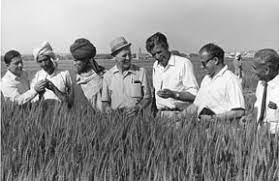
Development of Defence Technology
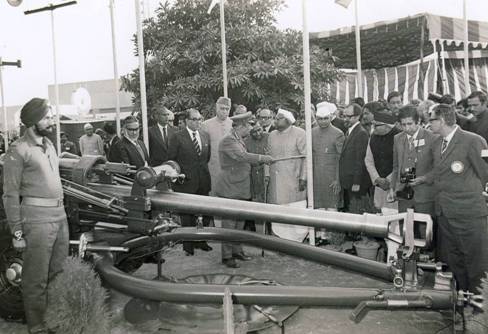
Development of Space Technology
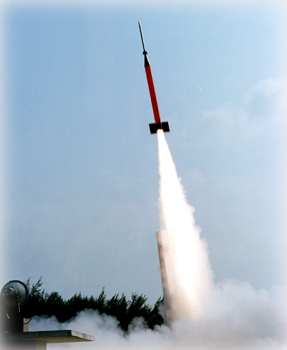
The Mars Orbiter Mission (MOM), also called Mangalyaan, is a space probe orbiting Mars since 24 September 2014. It was launched on 5 November 2013 by the Indian Space Research Organisation.
Who is the Original Designer of India’s National Flag?
Get here current GK and GK quiz questions in English and Hindi for India , World, Sports and Competitive exam preparation. Download the Jagran Josh Current Affairs App .
- IPL 2024 Final
- T20 World Cup Teams and Sqauds
- India T20 World Cup Squad 2024
- Buddha Purnima 2024
- IPL 2024 Points Table
- May Important Days 2024
- Orange Cap in IPL 2024
- Gautam Buddha Quotes
- MBSE HSSLC Result 2024
Latest Education News
Orange Cap in IPL 2024: Top Players List with Most Runs in TATA IPL
[Current] Orange Cap and Purple Cap Holders in IPL 2024
Who Won Yesterday IPL Match: RCB vs RR, Eliminator, Check All Details and Latest Points Table
India T20 World Cup 2024 Squad: ये है रोहित की ‘विराट’ टीम, किस रोल में कौन? देखें यहां
IPL Points Table 2024: आईपीएल 2024 Updated पॉइंट टेबल यहां देखें, KKR और RR, SRH, RCB Qualify
ICC T20 World Cup 2024: T20 वर्ल्ड कप का शेड्यूल जारी, कब और किससे है India का Match देखें यहां
IPL 2024 Qualifier 2: हैदराबाद के सामने रॉयल चैलेंज, कब, कहां और कैसे देखें क्वालीफायर 2, Tickets और Live Streaming डिटेल्स भी देखें
IPL 2024 Full Schedule: आईपीएल 2024 का फुल शेड्यूल, KKR पहुंचा फाइनल में
DL New Rules 2024: RTO गए बिना ड्राइविंग टेस्ट कैसे करें पास? जानें यहां
Buddha Purnima 2024: 45+ Images, Quotes, Wishes, Messages to Share on WhatsApp, Facebook, Instagram Status and Stories
30+ Question of the Day for School Assembly with Answers (May 23, 2024)
Top 5 Word of the Day for Morning Assembly 23 May, 2024
School Assembly News Headlines, May 23: Pune Car Accident, World Para Athletics Championship, Heatwave, Singapore Flight and More Top News
Manipur 10th Result 2024: BSEM Class 10 Results Date and Time Soon at manresult.nic.in, Check Latest Updates Here
Can You Find The Odd Donut Piece Hidden This Dessert Box Within 3 Seconds? Try Your Luck!
Maharashtra HSC Toppers List 2024: MSBSHSE Class 12th Science, Commerce and Arts Toppers Name, Marks, District-wise Pass Percentage and Other Stats
Gujarat High Court Recruitment 2024 for 1318 Steno, Computer Operator and Other Posts
IPL 2024 Eliminator: RR vs RCB Team Squad, Match Time Today, Live Streaming and Expected Playing 11
CHSE Odisha 12th Result 2024 Date Announced, Check Odisha 12th Results at orissaresults.nic.in
BSEB Class 10, 12 Compartment Answer Key 2024 Released, Raise Objections Until May 23
- Our Centers Delhi Bhubaneswar Lucknow
…..India's story of seven and a half decade

Bharat , that is India, now moves another milestone to celebrate its 75th year of independence . It is also a milestone to reflect back on as to what all we achieved in these 75 years, and what more we need to achieve. Finally, we need to articulate our vision, firm up a goal and get people, policies, and institutions aligned to the future vision. India has moved fast forward on all fronts. Bharat Katha, India's Story of Seven and a Half Decade is an initiative of GS SCORE to celebrate India's 75 years of freedom and analyse these 75 years of its glorious history through the lens of all relevant spheres. This series is a detailed source of information about the country’s political, social, economic, and cultural traditions since Independence. Through different articles, it reflects how social issues, economy, language, gender, nationalism, democracy, and constitutional development played a significant role in a historical context to shape present India. This initiative becomes more relevant for UPSC Civil Services Examinations as it contains special in-depth articles based on different themes of IAS Exam Syllabus: Indian History, Culture, Geography, Economy, Indian Polity, Governance, International Relations, Science technology, Environment, Disaster Management, and Internal Security. Together, we are on this journey, which starts a 12 months countdown to India’s 75th Independence Day.
Bharat Katha, India's Story of Seven and a Half Decade is an initiative of GS Score to celebrate India's 75 years of freedom and analyse these 75 years of its glorious history through the lens of all relevant spheres.
This initiative becomes more relevant for UPSC aspirants as it contains special in-depth articles based on different themes of UPSC (i.e., UPSC Subjects).
Together, we are on this journey, which starts a 12 months countdown to India’s 75th Independence Day.
Bharat Katha Documents
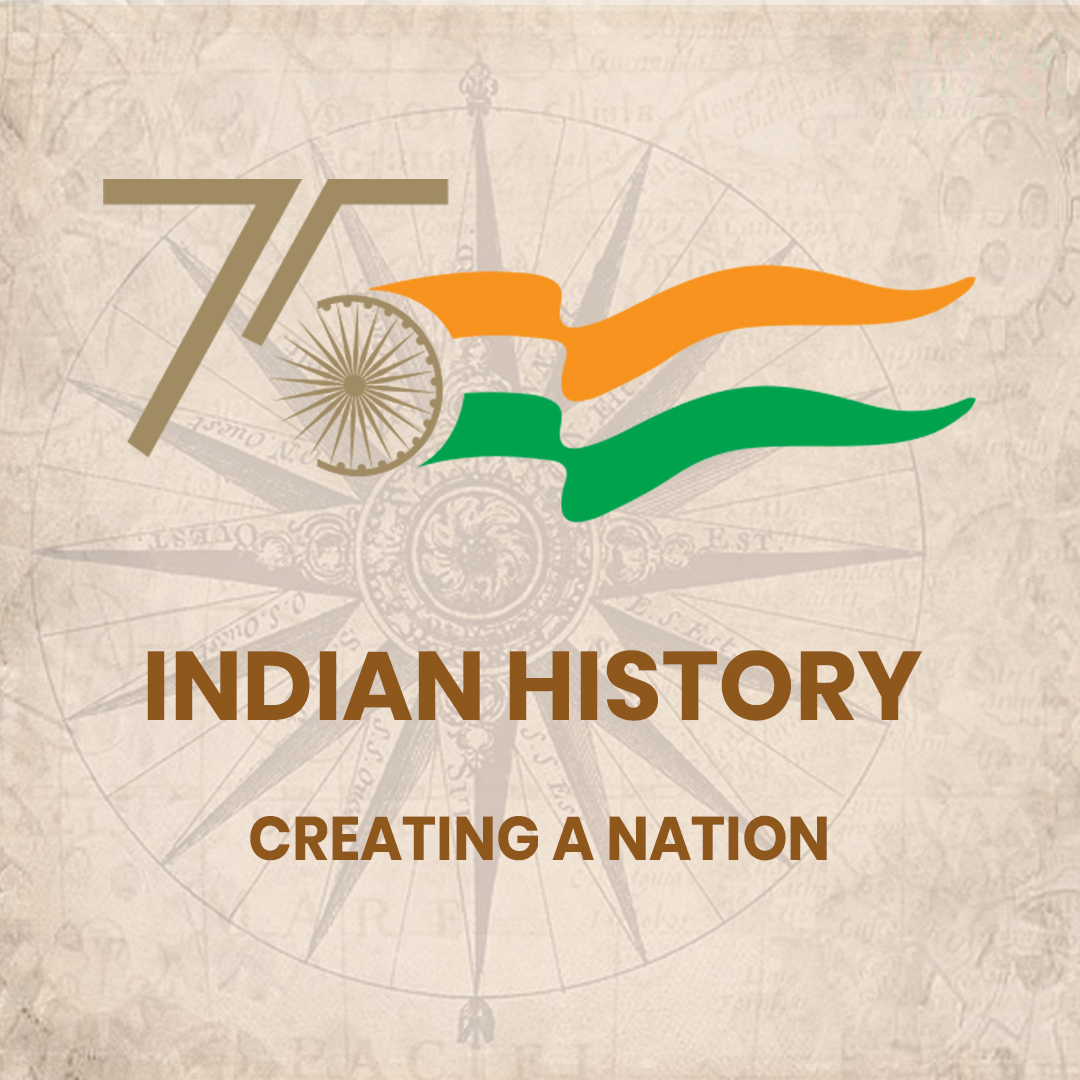
History is about facts, narratives, story-telling, inferring causality and drawing correlations, but never devoid of the “perspective” from which events have been put into words intended to connect our past with our present.
The rule of the British in India is possibly the most controversial and the most hotly debated aspect of the history of the British empire.
India, often known as "THE GOLDEN BIRD" or "QUEEN’S NECKLACE," was one of the most important colonies of British Empire. As India was politically, socially, and economically distinct from the rest of the British empire's colonies, British policies in India differed from those in other colonies.

We Indians have a strong sense of pride in the distinctiveness and diversity of their culture. Be it the country’s agricultural expansions and technological advancements in infrastructure, science and engineering are sources of pride. But a considerable amount of pride stems from India's rich artistic cultural exports of music, fine arts, literature and spirituality.
“A country’s ability to influence the preferences and behaviours of various actors in the international arena (states, corporations, communities, publics etc.) through attraction or persuasion rather than coercion.” -- Joseph Nye

There are many economic, social and physical reasons why people emigrate and they can usually be classified into push and pull factors. However, the migration in recent times has been observed due to geographical reasons largely due to Natural Disasters like floods, Cyclones, Landslides, Earthquakes and drought . These reasons are increasing with time and are expected to be one of the major reasons in the near future for both internal and external migration across the world.
Battles were fought, territories were drawn and it kept reshaping itself. India’s history is speckled with the ruins of empires. Kingdoms have periodically risen here, expanded and fallen, reshaping with them the region’s culture and identity.
This year we will be celebrating the 75 th year of Independence from British Rule which also brings the legacies of partition with it. The freedom was followed by a period of terror in which over 14 million people were forcibly made to relocate and about 2 million lost their lives. The event makes us face up many questions, like why this catastrophic moment came to existence, who was responsible for it, alternatives available to avert it, and many others.

India offers astounding variety in virtually every aspect of social life. Diversities of ethnic, linguistic, regional, economic, religious, class, and caste groups crosscut Indian society, which is also permeated with immense urban-rural differences and gender distinctions. Differences between north India and south India are particularly significant, especially in systems of kinship and marriage. Indian society is multifaceted to an extent perhaps unknown in any other of the world’s great civilizations—it is more like an area as varied as Europe than any other single nation-state
India materialised itself as an independent nation-state on 15th August 1947, after a long freedom struggle against the British colonial rule and gave itself a constitution which made India a Sovereign, Socialist, Secular, the Democratic Republic with a parliamentary system of government. Since then, the Indian growth story has earned monumental growth in all spheres, yet there are numerous challenges that India faces today in its everyday social life, which are intertwined in a way.
The worth of a civilization can be judged by the place given to women in society. One of several factors that justify the greatness of India's ancient culture is the honourable place granted to women.
India with 1.417 billion people is expected to claim the title of the most populated country next year, but with an average age of 29, it has one of the youngest populations As this pool of resources of young citizens enters the workforce, it could create a ‘demographic dividend .
The development or modernization that is being experienced in our country is not confined to the economy alone
“Always aim at complete harmony of thought and word and deed. Always aim at purifying your thoughts and everything will be well.” Mahatma Gandhi
The caste system is an important aspect of Indian social institutions. The word caste has created confusion in the sense that it is used to denote both Varna and Jati. Technically, both are different to each other. Several changes have occurred in the caste system due to the processes of Sanskritisation, westernization, modernization, democratic decentralization, industrialization and urbanization, etc.
However, in the changing situation caste has adapted too many new features like having formal organizations, becoming less rigid and having a link with politics.
Indian Society, which is largely male-dominated, for the position of women in society. Not only men, but even most women also internalize their position in society as a fair description of their status through the ages. These generalizations apply to some degree to practically every known society in the world.
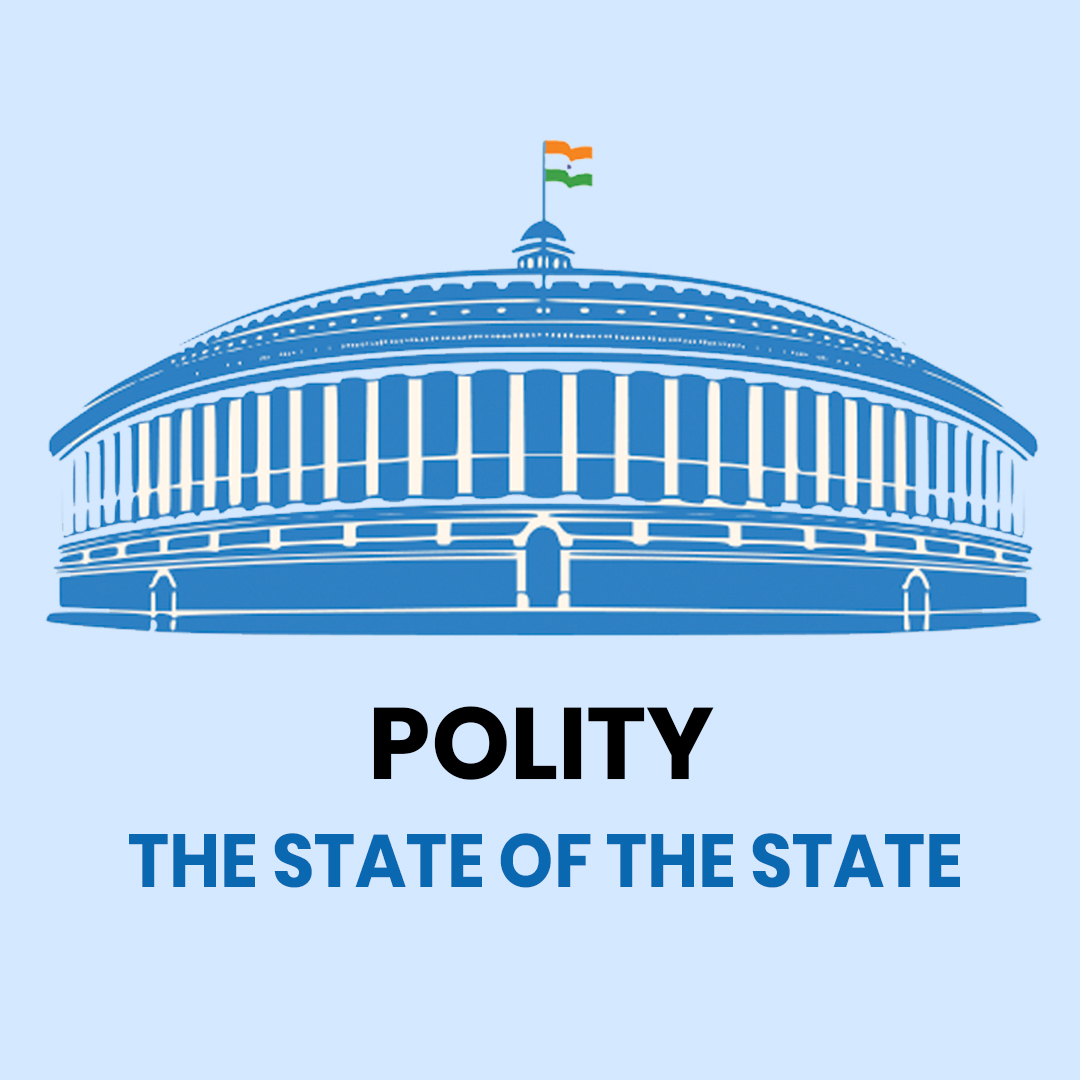
“India is the cradle of human race, the birthplace of human speech, the mother of history, the grandmother of tradition."
Political independence does not have much meaning without economic independence. One of the important indicators of economic independence is self-sufficiency in food grain The overall food grain scenario in India has undergone a drastic transformation in the last 75 years.
A society or nation where justice prevails always requires laws, rules and regulations for the proper functioning of various aspects of the society. Laws and rules are necessary for every society to maintain peace and harmony in society and to ensure the well-being of every individual.
The democratic setup in India comprises of three branches : the legislature , the executive branch , and the judiciary branch . Each branch of the democratic system performs different sets of functions from time to time, all while keeping the public and social interests in mind. The executive branch is headed by the President, who is the Head of State and exercises his or her power directly or through officers subordinate to him. The
Choosing the ‘Greatest Indian After Gandhi’ is difficult when the present exerts such a strong pull over our view of the past and there is a wide variation between how the ‘greatness’ of an individual is assessed by the common person and by the experts. Nations need heroes, but the construction of a national pantheon is rarely straightforward or uncontested.
To differentiate between “great” and “landmark”, it is necessary, to begin with, some very fine distinctions. A great judgment is one that restores the constitutional values of a polity from the waywardness into which it may have fallen, while a landmark judgment is one which opens up new directions in our constitutional thinking and, in the process, adds new dimensions to what is regarded as established constitutional principles. If “great” restore the centrality of constitutional values, “landmark” revitalises them.
Bharat, that is India, now moves another milestone to celebrate its 75th year of independence. It is also a milestone to reflect back on as to what all we achieved in these 75 years, and what more we need to achieve. Finally, we need to articulate our vision, firm up a goal and get people, policies and institutions aligned to the future vision. India has moved fast forward on all fronts, but due to lack of holistic approach, the success of one side is decimated by the ignorance of the other side.
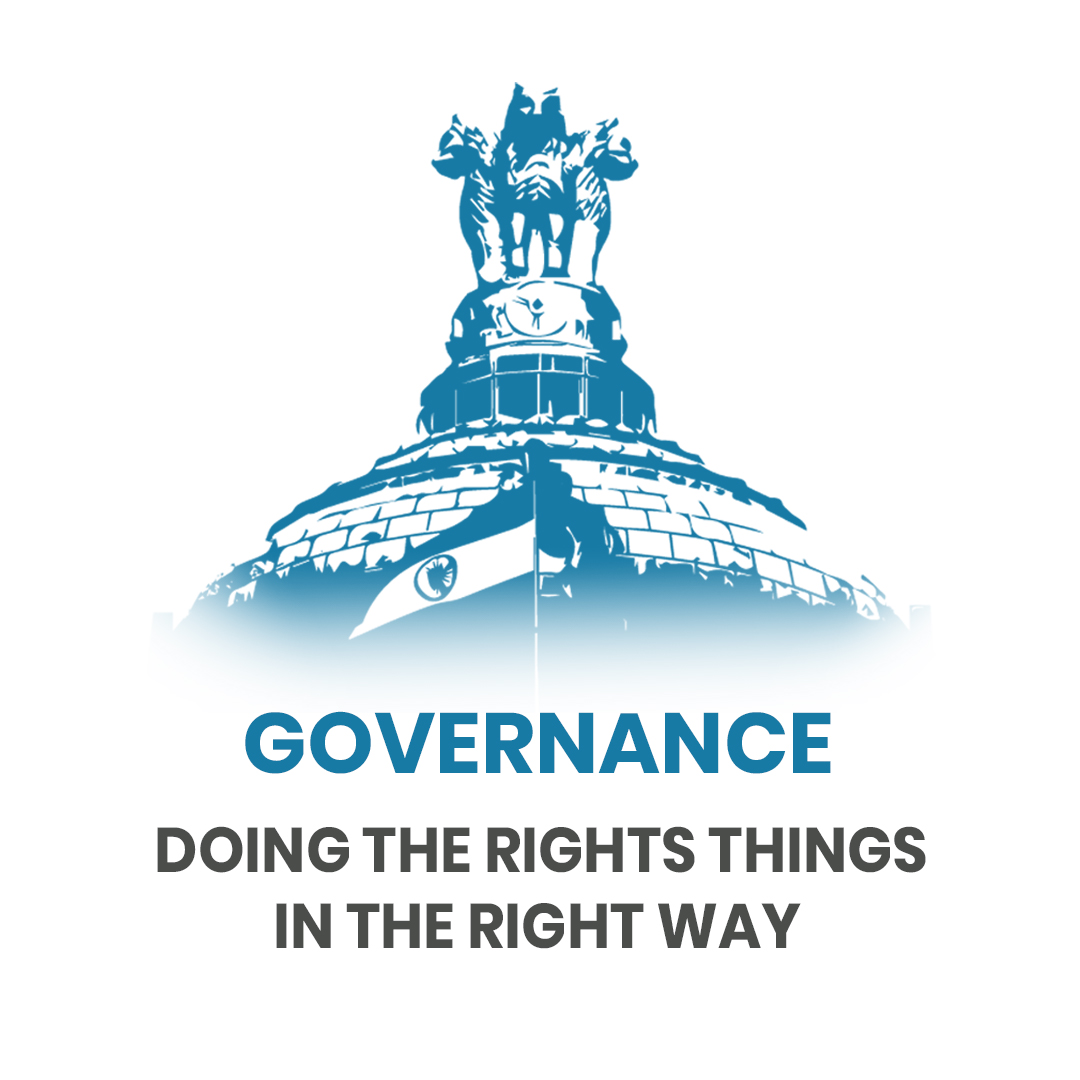
In our day-to-day life we require basic facilities such as water supply, drainage, garbage disposal, public health and sanitation. We must have watched such activities as installation or repairing of street lights, construction or repairing of roads or say renovation of a village tank is done by a specific group of people. It is the local government who do all these works for the people.
Even though India has completed 75 years of independence, casteism is still a divisive issue in India.
Indian Constitution is a progressive document based on a liberal ethos of equality and freedom. Secularism, as imbibed in the document gives freedom of religious practices and beliefs and even propagation to people of all faith.
State participation in social welfare has a long and continuous history extending over hundreds of years.
Civic engagement between different ethnic communities serves to contain ethnic conflict. Civic organizations play a crucial role in times of ethnic tensions. They can be considered as an instrument for negotiation and facilitation of conflicts, influencing the local authorities or government policies, technical support, monitoring the situation, analysis, research etc. We shall be looking into the integral link between the structure of civic life in a multiethnic society. To illustrate these links, there are two interconnected arguments
As a rising power, India’s role in global governance is under considerable scrutiny. We will be tracing the evolution of India’s engagement with global governance. During the course, we shall be evaluating the complexities undergirding India’s approach to the structural, institutional, and normative challenges facing the current global order as well as India’s approach to challenges, constraints and opportunities in shaping its regional order. Let’s delve into India’s past, current and potential future contributions to global governance and order.
Civil service refers to the body of government officials who are employed in civil occupations that are neither political nor judicial . The concept of civil service was prevalent in India from ancient times.
It is now more than 70 years down the line after a historic non-violent movement won Independence for the country freeing it from the clutches of colonial rule.
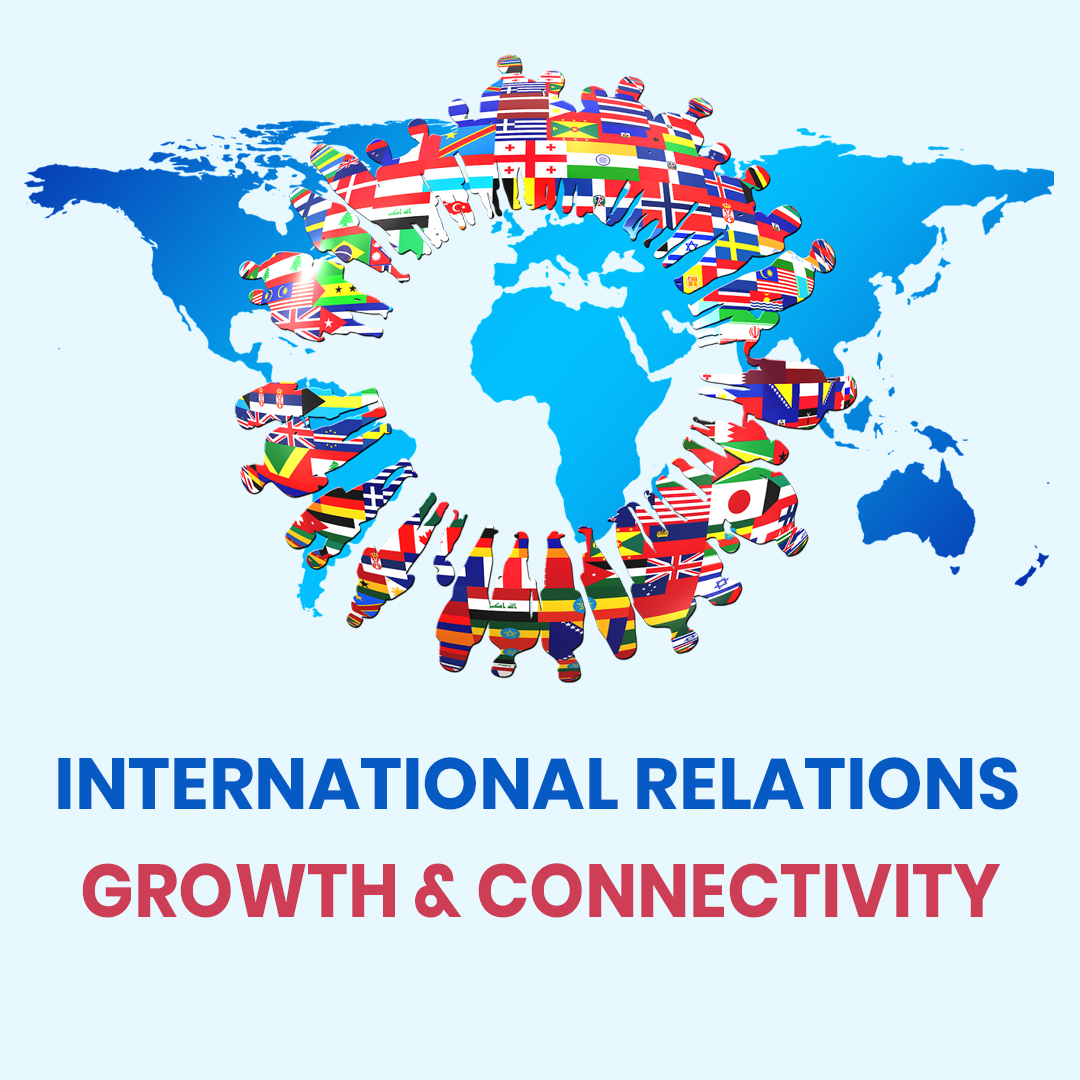
- Diasporas are the symbol of a nation’s pride and represent their country internationally.
- They help in building the country’s value internationally through their huge success stories. The diaspora’s ability to spread Indian soft power, lobby for India’s national interests, and contribute economically to India’s rise is now well-recognized.
Seventy-five years after India won Independence on 15 August 1947, the country’s internal boundaries continue to change, with the creation of two newly formed Union territories (UTs) by bifurcating the state of Jammu and Kashmir.
On a visit to India in 2009, the US Secretary of State’s verdict was unequivocal: ‘I consider India not just a regional power, but a global power. ’ Since the turn of the century, India’s economy has surpassed those predictions, expanding fourfold in the course of a decade.
The foreign policy of any country, unlike domestic policy, is usually considered to be stable. Foreign policy is both static and dynamic.
India is experiencing globally transformational events. It would be right to say that the gears and levels in geopolitics are changing at a rate faster than ever .

The Government of India has been making continuous efforts to set up systems of good governance through various schemes and laws. Earlier these systems were based on records, files and transactions which were generally physical. However in the recent years the concept of ‘citizen centric e-services’ has come to the fore.
Democracy is not solely about conducting fair elections alone. It is also not just about local governmental governance. Democracy thrives when citizens can establish two-way communication with the government, that is to have always an open channel of feedback in response to government actions.
It is not a hidden truth that plagues and pandemics change the course of humanity.
Science and Technology hold the key to the progress and development of any nation.

From independence, India has tackled homegrown insurgencies, externally fuelled rebellions, militancy, and terrorism. At a time when we, as a nation, are concerned about external threats from countries, it is crucial to give equal importance to our internal security.
The world order is appearing to be transiting from the Age of Information to the Age of Artificial Intelligence (AI). The mandate of the Age of Information was that one had to be well informed for achieving success in any field since knowledge-based decision-making was the key to that success.
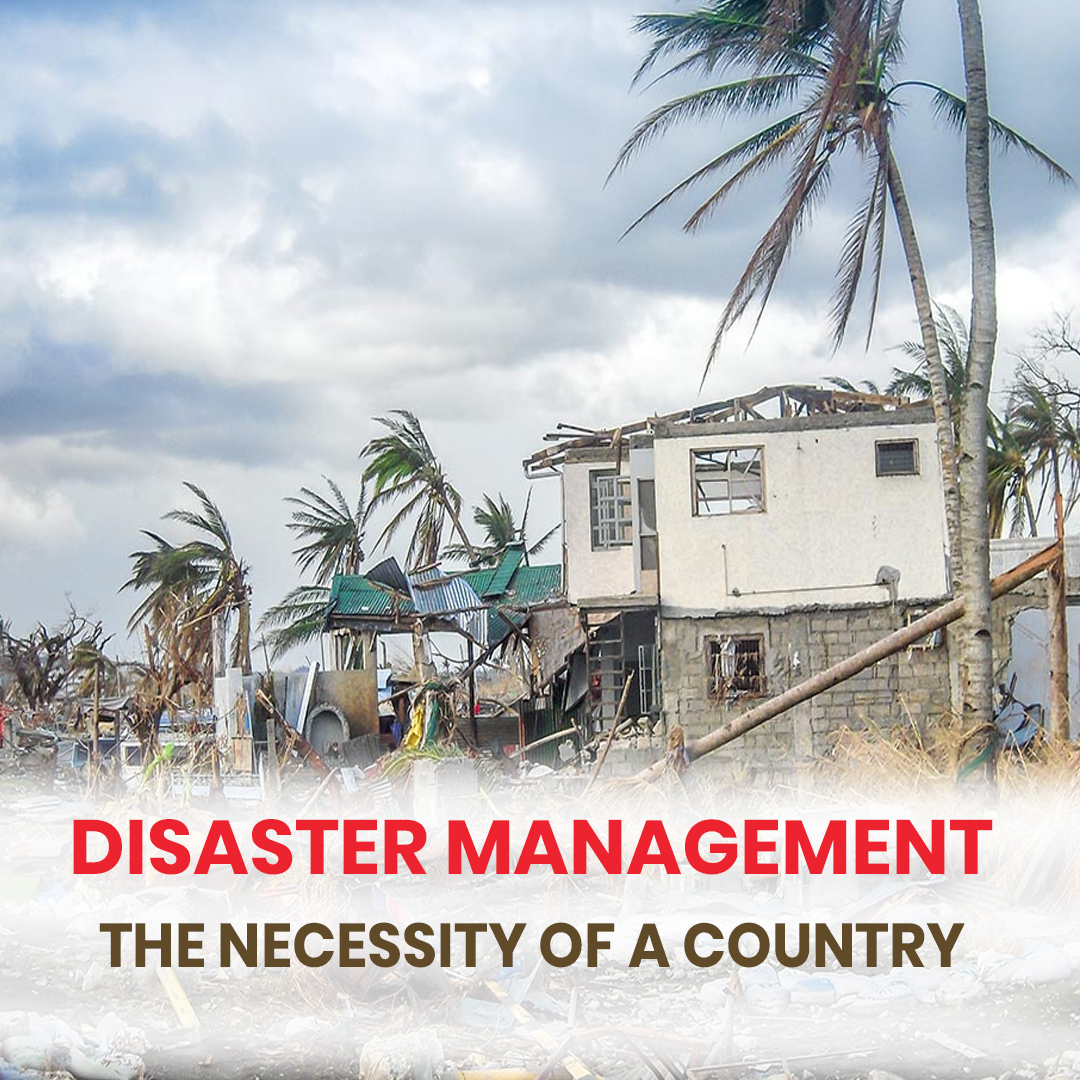
- India is a diverse country in terms of climate, terrain and relief and thus is prone to different types of disasters which include manmade disasters as well as natural disasters.
- Rapid industrial development and urbanization coupled with effects of climate change has aggravated the disasters in India. India has witnessed a large number of disasters since Independence.
India’s vast and variable geographical extent, diverse relief features coupled with climatic variations has made it vulnerable to different types of disasters.

Over the last 75 years, Indian agriculture has made rapid strides. From a meagre 55 million tonnes, production of foodgrains has increased to a record 308.65 million tonnes last season (July 2020-June 2021). Production of pulses, coarse cereals, natural fibres, sugarcane, vegetables and fruits have all increased manifold since Independence.
As India is going to be commemorating the 75 th year of independence this year, it's relevant to look into the path the Indian economy has taken and how this journey has helped India to reach its present state. The evolution of the Indian economy has seen its share of ups and downs, economic crisis to double-digit growth and now eyeing towards becoming a $ 5 trillion economy. The purpose of this discussion is to analyse how much has India really achieved in the last 74 years in fulfilling the aspirations on which it was founded.
The word ‘tax’ has been derived from the Latin word taxare or taxo , meaning ‘to assess the worth of something’. Taxation in any economy is an essential part of financial management as any government of the world requires huge revenue to manage and run its administration, spend money on essential public services such as health and education and infrastructure such as roadways

After 75 years of independence, India still needs freedom from air pollution, water pollution, and plastic pollution, or simply speaking, we need freedom from environmental pollution.
Environmental governance is a concept in political ecology and environmental policy that advocates sustainability (sustainable development) as the supreme consideration for managing all human activities— political, social and economic. In other words, it refers to the processes of decision-making involved in the control and management of the environment and natural resources.
The idea of environmental protection is an age-old idea imbibed in the Indian cultural ethos since time immemorial.
Verifying, please be patient.
Our Centers
DELHI (Karol Bagh)
GS SCORE, 1B, Second Floor, Pusa Road, Karol Bagh, New Delhi - 110005 (Beside Karol Bagh Metro Station Gate No. 8)
Get directions on Google Maps
BHUBANESWAR (Jaydev Vihar)
GS SCORE, Plot No.2298, Jaydev Vihar Square, Near HCG Day Care, BBSR - 751013
LUCKNOW (Aliganj)
GS SCORE, 2nd Floor, B-33, Sangam Chauraha, Sector H, Aliganj, Lucknow, UP - 226024

© 2024 IAS SCORE. All Rights Reserved
Welcome to our secure login portal. Access your account with ease.

- Using Password
Not registered yet? register here!
Welcome to our secure register portal. For a brighter future, register now and unlock endless learning opportunities.
User Register
Already have an account? Login
Oops, forgot your password? Don't worry, we've got you covered. Reset it here
Lost your login details? No problem! forgot your password in just a few clicks
Forgot Password
Verify your mobile number, you have successfully logged in.
Join Us on WhatsApp
Talk to our experts
1800-120-456-456
- India Independence Day Essay in English: Azadi Ka Amrit Mahotsav 2023

Short Essay on Independence Day - The Day India Became Independent
The day of 15th August 1947 has been embossed in the golden history of India. It is the day when India got its freedom from 200 years of British rule. It was a hard and long struggle in which many freedom fighters and great men sacrificed their lives for our beloved motherland.
India celebrates its Independence Day on the 15th of August every year. However, this year, the auspicious day is being celebrated as ‘77 Azadi Ka Amrit Mahotsav 2023’. Independence Day, called the Red-Letter Day in the history of our country, is celebrated as a national holiday throughout India.
Independence Day 2023 helps us remember every one of the penances our political dissidents made to liberate India from British rule. On 15th August 1947, India was announced free from British imperialism and turned into the biggest vote-based system, the largest democracy in the world.
In this essay on Independence Day, students can track down every one of the significant subtleties of India's Independence history. They can allude to it for their exam preparation as papers are generally asked in the CBSE English paper. Additionally, they can utilise this article as study material for the Independence Day essay for kids during the exam.
Essay on Independence Day 2023
15th August is commended as a public celebration with flag hoisting, marches, and social works. Schools, universities, workplaces, society buildings, government, and private associations celebrate this day beautifully. On this day, the Prime Minister of India hoists the National Flag at the Red Fort and addresses the country with a speech. Doordarshan communicates the whole occasion in real-time on TV.
History of Independence Day
In 1947, on 15th August, India became independent. We won freedom from British Raj after a hard struggle. On this day at the stroke of midnight, Pandit Jawaharlal Nehru, our first Prime Minister, unfurled the National Flag at the Red Fort for the first time. It marked the end of the 200 years old British reign in India. We now breathe air in a free and sovereign nation.
The British have governed India for about 200 years. Under British colonisation, the life of every Indian was dismal and full of struggle. Indians were treated as slaves and had no freedom of speech. Indian rulers were puppets in the possession of British officers. Indian fighters were dealt with cruelty in British camps, and farmers were starving as they couldn't grow crops and needed to pay substantial land taxes.
On this special occasion, the people of India remember the selfless sacrifices and unparalleled contributions of great men and women to achieve the independence of India. Leaders like Mahatma Gandhi, Jawaharlal Nehru, Subhas Chandra Bose, Maulana Abdul Kalam Azad, Sardar Patel, and Gopalbandhu Das are paid reverent homage by one and all in the country.
Great Indian Freedom Fighters
India couldn't have acquired independence without the efforts of numerous extraordinary freedom fighters. Bhagat Singh, Rani of Jhansi, Chandra Shekhar Azad, Subhas Chandra Bose, Mohandas Karamchand Gandhi, Jawaharlal Nehru, Ram Prasad Bismil, and Ashfaqulla Khan are some of the notable names.

Role of Women in India's Independence
Several women have played a significant part in the Indian freedom movement. Savitribai Phule, Mahadevi Verma, Capt Laxmi Sehgal, Rani Laxmibai, and Basanti Devi are just a few crucial names to remember. These women along with many others played a prominent role in leading India towards its independence.
The ‘Good’ British Rulers in India
Not all the British were awful; many started adoring India and did incredible things for it. Some even took part in the Indian Independence struggle. Some of the good British rulers include Warren Hastings who developed court reforms; Freda Bedi who supported Indian nationalism; Allan Octavian Hume who started the Indian National Congress, etc.
Why Do We Celebrate Indian Independence Day?
India accomplished freedom following a 200-year-long battle. India gained complete independence from the British on 15th August 1947. That is why the day holds importance in the heart of each Indian citizen either living in India or abroad. India is celebrating 77 years of freedom on 15th August 2023 as Azadi Ka Amrit Mahotsav. This day also helps us remember the struggles of freedom fighters and the lives sacrificed in attaining independence.
The struggle that our freedom fighters have gone through shows us that the freedom we appreciate today has been attained by shedding the blood of hundreds of individuals. It stirs patriotism inside each Indian. It makes the current generation understand the struggles of individuals around them and familiarise themselves with the freedom fighters of India.
Importance of Independence Day Essay
Independence day is a positive historical event for the country since we were free from British rule on this day. It unites diverse individuals all over the country. Unity in diversity is the fundamental path and strength of India. We feel pleased to be a part of the biggest majority-rule country on the planet, where we live in a democracy.
Independence Day is an important day in the life of every Indian citizen. Year after year, it reminds us of our great freedom fighters who sacrificed and struggled their lives in order to free our Motherland from British rule. It reminds us of the great paragons, which were the foundation of the dream of a free India, envisioned and realised by the founding fathers.
Activities on Independence Day
Independence Day is celebrated with great joy across the country. People hold meetings, fly the tricolour flag, and sing the National Anthem. There is great enthusiasm among all. In the national capital, Delhi, this day is celebrated with great pomp and show. All leaders and common people gather in large numbers on the parade ground in front of the Red Fort and eagerly wait for the arrival of the Prime Minister.
The Prime Minister then hoists the National Flag and makes a speech that focuses on the achievements of the government during the past year, mentions the issues that still need to be addressed, and calls upon further developmental efforts. Foreign dignitaries are also invited to this occasion.
Tributes are paid to the freedom fighters who sacrificed their lives during the struggle. The Indian National Anthem – “Jana Gana Mana” is sung. The parade by the Indian Army and the Paramilitary forces is followed by the speech. All state capitals hold events on similar lines with the Chief Minister of the respective states unfurling the National Flag.
Independence Day is observed with great honour at all the government and private institutions, schools, and colleges. Students take part in parades and sing the National Anthem before hoisting the National Flag. Some historical buildings are specially decorated with lights depicting the independence theme. Special programs like planting trees are taken up on this day. The young minds are infused with a sense of patriotism and nationalistic feelings. To celebrate this occasion, sports and cultural competitions are conducted, and prizes are awarded to the winners. Sweets are distributed among everyone. Patriotic songs can be heard at every street corner.
Another interesting feature of the celebration is the kite-flying event that is held all over the country with great zeal. The sky on this day is filled with kites of various colours, shapes, and sizes.
Even television channels and radio programs are charged up with patriotism. The channels telecast movies and documentaries based on patriotic themes in order to let the people and children know about various incidents of our freedom struggle and to inspire a love for our motherland. All the national newspapers also print special editions and cite inspirational stories and excerpts of the life of great men from the great books written about them.
Quotes on Indian Independence Day
"Long years ago, we made a tryst with destiny, and now the time comes when we shall redeem our pledge." - Jawaharlal Nehru
"The best road to progress is freedom's road." - Mahatma Gandhi
"India is, the cradle of the human race, the birthplace of human speech, the mother of history, the grandmother of legend, and the great-grandmother of tradition." - Mark Twain
"We owe a lot to the Indians, who taught us how to count, without which no worthwhile scientific discovery could have been made." - Albert Einstein
Indian Independence Day 2023 is a national occasion and celebrated as a national holiday on which all shops, workplaces, schools and universities remain closed. This day is a token to the freedom fighters and patriots who sacrificed their lives so we could experience and live in a free land. The tricolour is hoisted in schools and other institutions on this day.
A wind of patriotism and national integration blows across the country on this day. The country is celebrating 77 Azadi Ka Amrit Mahotsav as it completes 76 years of independence to remind the citizens of the sacrifices made by our forefathers. Through Azadi Ka Amrit Mahotsav, India will commemorate its past this Independence Day and will also lay plans for the future. It is now in the hands of India’s youth to shape and form the future of our country.

FAQs on India Independence Day Essay in English: Azadi Ka Amrit Mahotsav 2023
1. Name a few important freedom fighters who sacrificed their lives for the independence of our motherland.
Some of the great freedom fighters like Mahatma Gandhi, Bhagat Singh, Chandra Shekhar Azad, Pandit Jawaharlal Nehru, Subhash Chandra Bose, Sardar Ballabh Patel, Bhagat Singh, Maulana Kalam Azad, etc. were at the forefront of the freedom struggle.
2. What is the importance of Independence Day?
Independence Day is the day when all Indians remember the struggle of the eminent leaders to get freedom from the 200 years of British rule. They went through a long and very hard struggle. Many people sacrificed their lives to give us independence. So we pay tribute to all those freedom fighters and take an oath to carry on the legacy for a better country in the future.
3. Why is Independence Day called a Red-Letter Day?
Independence Day is called a Red-Letter Day because it is a special occasion when India got freedom from the hands of the British who ruled our country for over 200 years.
4. How do schools and colleges celebrate this day?
Most schools and colleges celebrate this day with great pomp and show. They hoist the National Flag and sing the National Anthem. The students conduct various cultural programs. They perform small skits based on the patriotic theme. Sports events are also conducted in many institutions, and awards are given to the winners. Many schools also conduct drawing competitions where the students are expected to draw something based on the theme of independence. Sweets are distributed among the students and the staff of the schools and colleges.
5. Which day is Independence Day in 1947?
India gained independence from the British on 15 August 1947.
6. Who declared freedom for India?
Lord Mountbatten, the last Viceroy of India, declared India's independence on 15 August 1947.
Arts & Culture
Celebrating 75 years of independent India
05 Aug, 2022
[[read-time]] min read
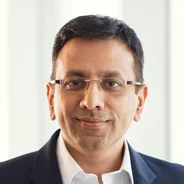
August 15th, 1947 is etched deep into history and people’s collective memory as the day that India achieved independence. Over the last 75 years, India has channeled her civilizational strengths and cultural diversity into a brand new shared future, and opportunities for achievement, progress, and prosperity for its billion-plus citizens, making our country an inspiration for the rest of the world.
In our journey in India over the past 15+ years, we have had the privilege of solving for India’s unique needs, inspiring innovations that have not just benefited hundreds of millions of people here but those all around the world.
As India ushers in its vision for the next 25 years, we’re excited to join in the country’s 75th Independence Day celebrations by launching a series of special initiatives over the course of the anniversary year across our products and services. These initiatives will enable the many millions of Digital Indians today to participate in this momentous occasion, be inspired by the milestones the country has marked in the past, and moreover, celebrate the steady progress it continues to make on so many fronts.

We are pleased to join the Ministry of Culture to offer people informative online content on the contributions of Indians and the evolution of India’s progress throughout the Government’s own year-long ‘ Azadi Ka Amrit Mahotsav ’ program.
Mr. G Kishan Reddy, Minister of Tourism, Culture and Development of North Eastern Region of India: “Azadi Ka Amrit Mahotsav is an initiative of the Government of India to celebrate and commemorate 75 years of independence and the glorious history of its people, culture, and achievements. This Mahotsav is dedicated to the people of India who have not only been instrumental in bringing India thus far in its evolutionary journey but also hold within them the power and potential to enable Prime Minister Narendra Modi's vision of activating India 2.0, fuelled by the spirit of Aatmanirbhar Bharat. Having made tremendous progress on empowering citizens through digital, I am hopeful that the partnership with Google shall strengthen the Ministry’s goal of preserving, promoting and disseminating all forms of Indian art and culture. I am pleased to note that Google is launching a broad-based effort to leverage its products and services and pay tribute to the occasion. This is an important expansion of our collaborations with Google Arts & Culture in digitising India’s rich history and heritage.”
The centerpiece of the celebrations is the launch of a new collection on Google Arts & Culture named ‘ India ki Udaan ’. This collection will celebrate India’s unwavering spirit and its 75 years of independence. This special collection, whose literal translation means “India takes flight”, allows anyone to explore more than 120 illustrations and 21 stories created by 10 talented artists, alongside exhibitions from various institutions across India — including the Ministry of Tourism, Museum of Art & Photography, Heritage Directorate of the Indian Railways, the Indian Academy of Sciences and the Dastkari Haat Samiti. This initiative offers a unique view of some of India's remarkable moments and lets people discover India’s history, its iconic personalities, its proudest scientific and sporting achievements, and how women in India continue to inspire the world. As we go forward, we’ll continue to work with partners and artists to enrich the collection.

Click to check out Google Arts & Culture’s new India ki Udaan collection
Amit Sood, Director, Google Arts & Culture: “We’re thrilled to join the celebration with a brand new collection called ‘India ki Udaan’. Our Google Arts & Culture journey began in India ten years ago. Over the past decade, our mission of making world culture more accessible to everyone through technology has evolved. And thanks to more than 100 partners in India, we bring the cultural treasures, stories, and artists from India to the global audience. To our partners, a huge thank you. And by partners we mean everyone: the curator spending time to create a stunning online exhibition, the art handlers who help digitise thousands of spaces and archives, the preservation expert sharing fragile treasures, the directors who believe in participating in an online platform, and everyone behind the scenes. Together with our partners, we look forward to enriching our India ki Udaan collections by bringing to it the unique blend of archives and artistry for people in India and across the globe.”
Starting today, you can explore the ‘India ki Udaan ’ collection in English and Hindi on Google Arts & Culture. Read more here .
A celebration such as this would remain incomplete without the participation of children whose hopes and dreams will help shape the future. We’re thrilled to open up entries to the 2022 Doodle for Google contest on the theme of “In the next 25 years, my India will…” to students from Grade 1-10 based in India through September 30, 2022. For details on how to enter the contest, resources for educators and parents, as well the contest rules, head to our website . The National Winner will see their artwork on the Google homepage in India on November 14th, and win a INR 500,000 college scholarship, a INR 200,000 technology package for their school/non-profit organisation, a recognition of achievement, Google hardware, and fun Google collectibles. 4 Group winners and 15 finalists will also win exciting prizes. We can’t wait to see what students create.

Starting August 15th, we will be launching many delightful experiences across our other products and services for people to participate in the celebrations.
Follow us on @GoogleIndia to stay updated.
Related stories
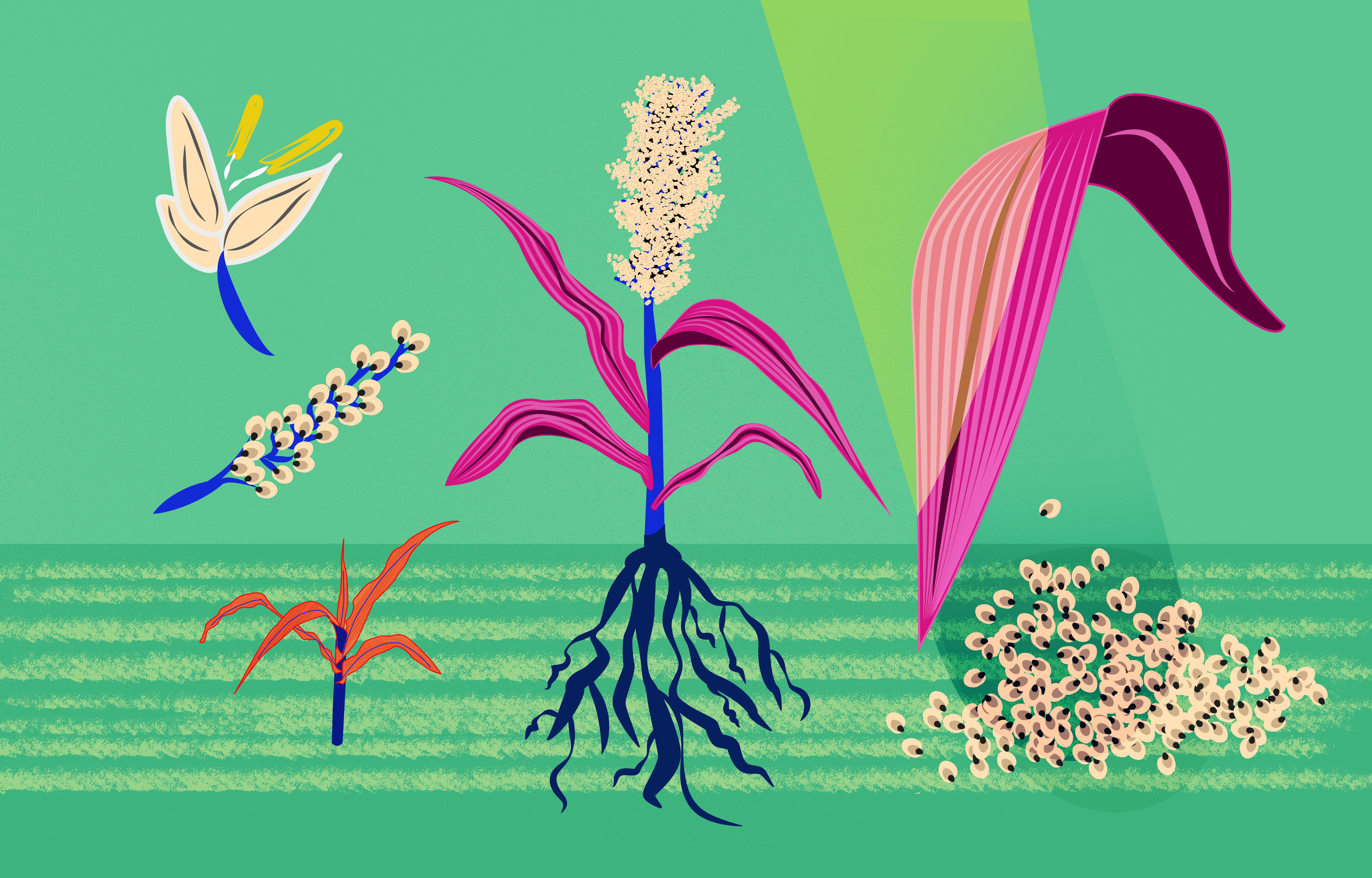
Spotlighting an ancient superfood that is shaping our future
Shining new light on india's matchbox art.
Discover the beauty of an evergreen artform in a new digital exhibit with artwork by artist Harshit Agrawal
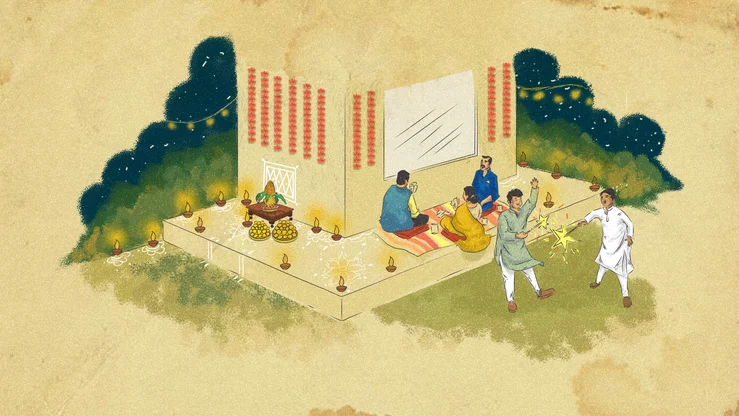
Happy Diwali from Google Arts & Culture!
Celebrate holi virtually with stories from across india.
Google Arts & Culture partners with Incredible India, Ministry of Tourism and 15 cultural institutions globally to create Holi @ Home, a virtual destination for everyone…
Dive into Diwali at home with Google Arts & Culture
Google Arts & Culture has created a virtual Diwali experience that everyone can be a part of, wherever you are in the world.
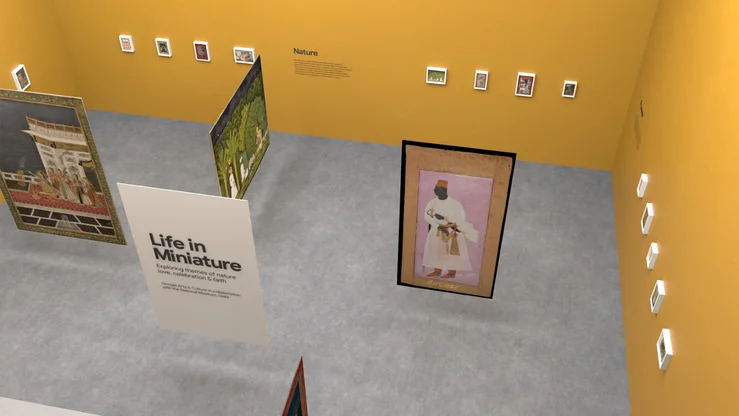
India’s mini-masterpieces brought to life with AI and AR

India’s achievements after 75 years of Independence
India's achievements after 75 years of Independence: Article talks about the progress India has made in the last 75 years in the field of economic growth, scientific innovations and in other fields.
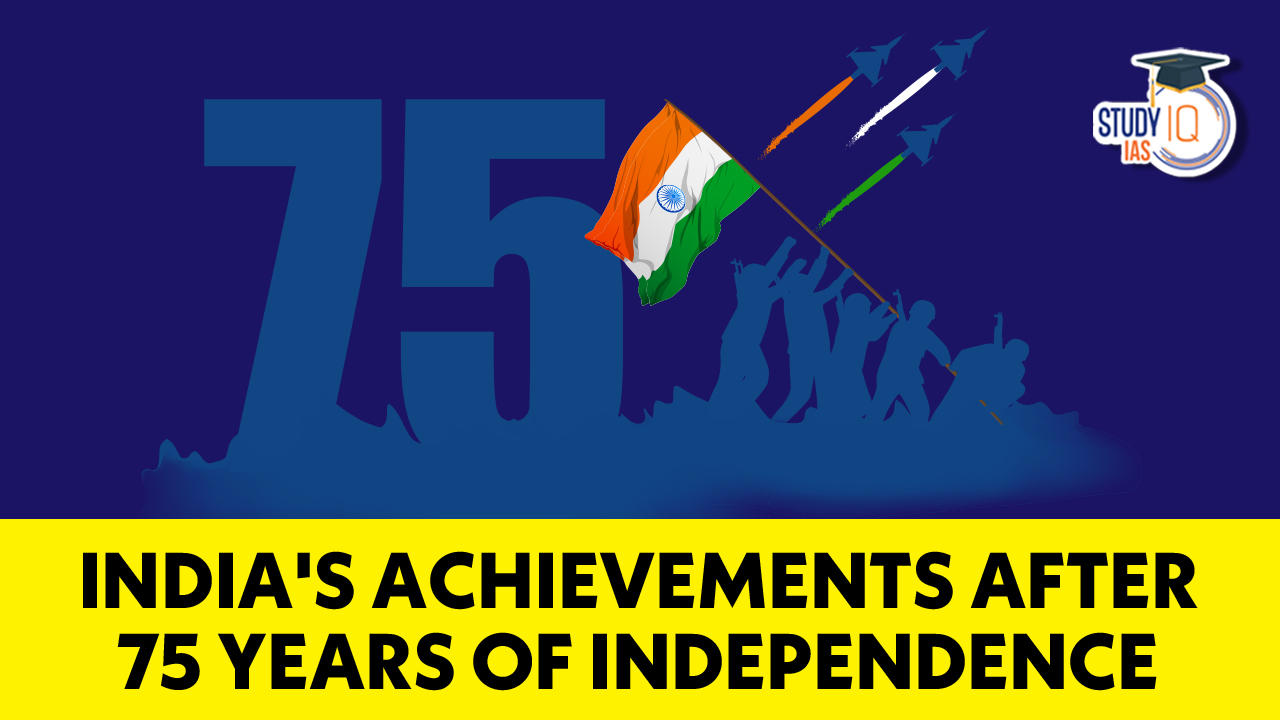
Table of Contents
India’s achievements after 75 Years of India’s Independence: India’s achivement after August 15th, 1947, has become a prime illustration of a remarkable growth tale. The journey demonstrates India’s development in areas such as agricultural production, nuclear and space technology, world-class educational institutions, Ayurveda, biotechnology, giant steel plants, and becoming a leader in information technology, as well as having the third-largest start-up ecosystem in the world.
India’s achievements after 75 years of Independence: Historic Events, Significant Achievements & Milestones
As India marks its 75th year of independence, let’s examine the historical occurrences, notable accomplishments, and noteworthy milestones that occurred during this time:
15 th August 1947: India’s Independence Day
India became independent from British rule on August 15, 1947. On August 14, 1947, just before the clock struck twelve, our first prime minister, Jawaharlal Nehru, gave the renowned “Tryst with Destiny” speech to the Indian Constituent Assembly in the Parliament. On August 15 in Delhi’s Red Fort, Pandit Nehru raised the Indian National Flag over the Lahori Gate.
26 th January 1950: India became a Republic Country
The Indian Constituent Assembly ratified the Constitution on November 26, 1949. Later, on January 26, 1950, the Indian Constitution went into effect. The Dominion of India became the Republic of India when the Constitution of India took the place of the Government of India Act 1935 as the primary law governing the nation. The Indian Constitution is the country’s highest law. Every year, India celebrates its Republic Day on January 26.
1951: India’s First Five-year Plan was launched
In 1951, Jawaharlal Nehru, our first prime minister, gave the First Five-Year Plan to the Indian Parliament. The Harrod-Domar model, with a few modifications, served as the foundation for the First Five-Year Plan, which concentrated primarily on the growth of the primary sector. Agricultural growth served as the first five-year plan’s guiding principle. The major goal was to find solutions to the various issues that the nation’s division had created. The objective of this strategy was to rebuild the nation once it gained independence.
1952: India witnessed the first Lok Sabha Election
India held general elections from October 25, 1951, to February 21, 1952. These were the first Lok Sabha elections held following the country’s independence in August 1947. On May 13, 1952, this Lok Sabha’s first session officially opened. There were 489 seats in the Lok Sabha overall, and 17.3 crore people were eligible to vote. 364 seats were won by the Indian National Congress (INC). The first Lok Sabha was dissolved on April 4, 1957, after serving its entire five-year term. Jawaharlal Nehru became India’s first prime minister to be chosen democratically.
1953: Air India was nationalized
Nine airlines—Air India, Air Services of India, Airways (India), Bharat Airways, Deccan Airways, Himalayan Aviation, Indian National Airways, Kalinga Airlines, and Air India International—were nationalised by Nehru under the Air Corporations Act of 1953 and placed under the control of two PSEs, Indian Airlines and Air India International.
1954: India and China signed the Panchsheel
In the Agreement on Trade and Intercourse between the Tibet region of China and India signed on April 29, 1954, the two governments first formally stated the Panchsheel, or Five Principles of Peaceful Coexistence, stating in its preamble that they “have resolved to enter into the present Agreement based on the following principles: –
- Mutual respect for each other’s territorial integrity and sovereignty,
- Mutual non-aggression,
- Mutual non-interference,
- Equality and mutual benefit, and
- Peaceful co-existence.”
1955: State Bank of India (SBI) was founded
The State Bank of India was established on July 1st, 1955. In 1955, the Indian government nationalised the Imperial Bank of India, changing the bank’s name to State Bank of India and giving the Reserve Bank of India a 60% ownership interest.
1957: The decimalization of the rupee
On April 1, 1957, ten years after gaining independence from the British, Indian coins became decimal. In September 1955, the Indian Coinage Act was revised to include the decimal system. A circular from the Comptroller and Auditor-General of India stated, “Government accounting with effect from April 1, 1957 is to be maintained in terms of rupees and naye paise instead of rupees, annas, and pies,” in April 1956, after the modified Act became law. Therefore, all challans supporting funds submitted for payment of government dues must be represented in the new coinage. All withdrawal bills must be specified in terms of rupees and naye paise as well.
1960: Green Revolution Began
Norman Borlaug started the Green Revolution movement in the 1960s. He is referred to as the “Father of the Green Revolution” globally. He was awarded the Nobel Peace Prize in 1970 as a result of his work creating high-yielding wheat varieties (HYVs).
1961: Liberation of Goa
The Republic of India’s process of annexing Estado da India, the former Portuguese Indian territory of Goa, Daman, and Diu, known as the Annexation of Goa, began with an armed intervention by the Indian Armed Forces in December 1961. This event is known as the “Liberation of Goa” in India.
1962: India-China War
In October and November of 1962, China and India fought a war known as the Sino-Indian War. The conflict was mostly sparked by a contested Himalayan border. On November 20, 1962, China announced a cease-fire and its withdrawal to its alleged “Line of Actual Control,” which marked the end of the war”.
1963: India’s first-ever rocket launch
The launch of the first sounding rocket from Thumba near Thiruvananthapuram, Kerala on 21 November 1963, marked the beginning of the Indian Space Programme. Sounding rockets made it possible to probe the atmosphere in situ using rocket-borne instrumentation. This was the first milestone in modern India’s space odyssey. Dr. Vikram Sarabhai and his then accomplice Dr. APJ Abdul Kalam were the brainchild of this achievement.
1965: Indo-Pakistani War
The Second Kashmir War, also known as the Indo-Pakistani War of 1965, was the result of clashes between Pakistan and India between April 1965 and September 1965. Operation Gibraltar, a Pakistani operation intended to infiltrate troops into Jammu and Kashmir and spark an uprising against Indian sovereignty, was the direct cause of the conflict and brought it to a head. Indian troops crossed the line of the cease-fire on 15 August. The United Nations Security Council unanimously approved a resolution on September 20 calling for a 48-hour unconditional ceasefire between the two countries. Pakistan accepted the demand on September 23 while India did so right away.
1966: Indira Gandi Became First Female PM of India
Following Shastri’s unexpected passing in January 1966, Indira Gandhi was appointed Congress Party leader and subsequently became prime minister as part of a deal between the party’s right and left wings. However, the right wing of the party, led by the former minister of finance Morarji Desai, consistently opposed her leadership.
1969: Formation of Indian Space Research Organisation (ISRO)
In order to advance planetary exploration and space science research while advancing national development, ISRO was established in 1969. The Indian space program’s founding fathers, scientist Vikram Sarabhai and India’s first prime minister Pt. Jawaharlal Nehru, who founded INCOSPAR (Indian National Committee for Space Research) in 1962, are credited with creating ISRO, which succeeded INCOSPAR.
1970: White Revolution Began
Operation Flood, the largest dairy development programme ever initiated on January 13th, 1970, was an important undertaking for India’s National Dairy Development Board.
1971: India-Pakistan War
The Indo-Pakistani War of 1971 was a military conflict between India and Pakistan that took place in East Pakistan from 3 December 1971 till Dacca (Dhaka) fell on 16 December 1971 as part of the Bangladesh Liberation War.
1975: The Emergency was imposed
India’s “Emergency” was a 21-month period from 1975 to 1977 during which Prime Minister Indira Gandhi imposed a national state of emergency. The Emergency was formally declared by President Fakhruddin Ali Ahmed under Article 352 of the Constitution as a result of the ongoing “internal disturbance” and lasted from June 25, 1975, to March 21, 1977, when it was lifted. The majority of Indira Gandhi’s political rivals were put behind bars, elections were annulled, civil freedoms were suspended, and the press was restricted. During that time, many human rights were broken. One of the most contentious eras in independent India’s history is the Emergency.
1982: Colour television began its journey in India
When it began airing national programming in 1982, DD officially became a national broadcaster. Colour TVs were released in Indian markets the same year. The first colour television broadcast was the Independence Day parade on August 15, 1982, which was followed by the Asian Games in Delhi.
1983: India won the cricket World Cup for the first time
The Indian Cricket Team made history on June 25, 1983, when it defeated the two-time defending champion West Indies to win the World Cup. The turning point in cricket history is widely regarded as being India’s victory in 1983. The 1983 World Cup was held in England’s Lord’s Stadium. India reached the World Cup Final for the first time, and the West Indies were competing in their third straight World Cup final.
1987: Goa became one of the States of India
Goa became a state on May 30, 1987, and was divided into North Goa and South Goa as a result (Daman and Diu got their own union territory). The first Chief Minister of Goa, Daman, and Diu is Dayanand Bandodkar. On May 30, 1987, Goa became the 25th state of India.
1988: The SEBI was established
The Government established the Securities and Exchange Board of India on April 12, 1988, as a non-statutory body to handle all issues pertaining to the growth and regulation of the securities market, investor protection, and to provide guidance to the Government on all of these issues.
1989: Agni Missile was successfully launched
Liberalisation, Privatisation, and Globalisation were the three pillars of the new economic strategy of 1991. A severe balance of payments crisis that occurred in the same year served as the immediate catalyst for India’s economic reforms in 1991. India’s balance of payments issue first showed signals in late 1990 when its foreign exchange reserves started to decline.
1995: Delhi Metro Rail Corporation Limited was founded
On May 3, 1995, the Delhi Metro Rail Corporation (DMRC) was established in partnership by the governments of Delhi and India under the leadership of Prime Minister H.D. Deve Gowda[19].
1998: India conducted Pokhran-II tests
Twenty-four years after Pokhran-I, on May 11 and 13, 1998, the Indian Defence Research and Development Organisation (DRDO) and Atomic Energy Commission (AEC) carried out five more nuclear tests at the Pokhran range, called “Pokhran-II.” Dr. R. Chidambaram, the Director of the Department of Atomic Energy (DAE), and Dr. Abdul Kalam, the Chief Scientific Advisor and Director of the Defence Research and Development Organisation (DRDO), served as the principal coordinators for this test planning.
1999: Kargil War
The Kargil War, commonly referred to as the Kargil conflict, was an armed battle that took place between India and Pakistan in the Kargil district of Jammu and Kashmir as well as other locations along the Line of Control from May to July 1999. By proclaiming victory over Pakistan in the Kargil war on July 26, 1999, India celebrated the successful conclusion of “Operation Vijay” and put an end to the three-month conflict along the Line of Control. Since then, the day has been recognised as “Kargil Vijay Diwas.”.
2000: Jharkhand became India’s 26th state
On November 15, 2000, Jharkhand was separated from Bihar’s 18 districts to form its own state. Later, six additional districts were created by rearranging the existing ones.
2007: First Woman President of India
Pratibha Patil, an Indian politician and attorney, presided over India as its first female president from 2007 until 2012.
2008: Chandrayaan-1 launched
The Indian Space Research Organisation (ISRO) launched Chandrayaan-1 on October 22, 2008, the nation’s first lunar probe under the Chandrayaan programme. India’s space programme received a big boost from the expedition as our nation created its own technologies to study the Moon.
2010: Education became a fundamental right of children
On August 4, 2009, the Indian Parliament passed the Right to Education Act (RTE), also known as the Right of Children to Free and Compulsory Education Act. In accordance with Article 21A of the Indian Constitution, it outlines the specifics of the significance of free and mandatory education for children in India between the ages of 6 and 14. India became one of the nations in the world to declare education to be a fundamental right when the Act went into effect on April 1, 2010.
2015: NITI Aayog was formed
The NITI Aayog, the country’s top public policy think tank and the nodal organisation charged with fostering cooperative federalism and accelerating economic development by involving state governments in the formulation of economic policy, was established on January 1, 2015.
2017: GST was launched by the Indian government
The GST, or Goods and Services Tax, was introduced by the Indian government and President of India at midnight on July 1, 2017. It was commemorated by a historic midnight session of both Houses of Parliament (June 30-July 1), which met in the Central Hall and was attended by prominent figures from the business and entertainment industries.
2020: COVID-19 Pandemic and India’s lockdown
India experienced the COVID-19 epidemic in 2020, and as a result of the ensuing lockdown, residents were confined to their houses. The story of lockdown started on the evening of March 24, 2020, when the Indian government imposed a 21-day statewide lockdown, restricting the movement of the whole populace in an effort to stop the pandemic from spreading. It came following a 14-hour voluntary public curfew on March 22 and the implementation of a number of rules in the areas of the nation affected by COVID-19.
2022: India gets its first tribal President
On July 25, 2022, Draupadi Murmu took the oath of office as India’s fifteenth president. She ran against Yashwant Sinha, the candidate for the top constitutional position put up by the unified opposition. Tribal leader Draupadi Murmu hails from Rairangpur in the Odisha district of Mayurbhanj.
Important Facts on India’s Achievement after Independence
Below is a brief list of some of India’s notable post-independence accomplishments:
- The Indian Railways were founded in the year 1951.
- With over 7000 stations, India’s rail system is the largest and busiest in the world.
- India had its first general election in 1951.
- The Apsara nuclear reactor, which was created in 1956, was Asia’s first nuclear reactor.
- On the moon, Chandrayaan 1 was established in 2008.
- Sir M Visvesvaraya, the pioneer of Indian economic planning, contributed to the development of the most effective form of the Indian economy.
Sharing is caring!
India's achievements after 75 years of Independence FAQs
What did india achieved after 75 years of independence.
In 1974, India conducted “Smiling Buddha”, its first nuclear test, making its place on the list of five nuclear-powered nations. This is one of the biggest achievements of India since 1947. Today, India has the 2nd largest military force and largest voluntary army in the world.
What we achieved in 75 years?
In the last seven-and-a-half decades, India achieved remarkable development in agriculture, heavy industry, irrigation, energy production, nuclear power capability, space technology, biotechnology, telecommunication, oceanography and science education and research.
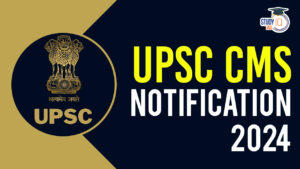
Leave a comment
Your email address will not be published. Required fields are marked *
Save my name, email, and website in this browser for the next time I comment.
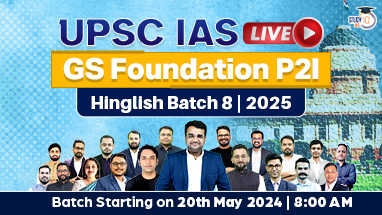
- UPSC Online Coaching
- UPSC Exam 2024
- UPSC Syllabus 2024
- UPSC Prelims Syllabus 2024
- UPSC Mains Syllabus 2024
- UPSC Exam Pattern 2024
- UPSC Age Limit 2024
- UPSC Calendar 2024
- UPSC Syllabus in Hindi
- UPSC Full Form
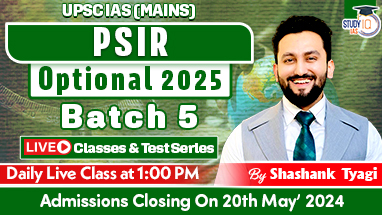
Recent Posts
- UPPSC Exam 2024
- UPPSC Calendar
- UPPSC Syllabus 2024
- UPPSC Exam Pattern 2024
- UPPSC Application Form 2024
- UPPSC Eligibility Criteria 2024
- UPPSC Admit card 2024
- UPPSC Salary And Posts
- UPPSC Cut Off
- UPPSC Previous Year Paper
BPSC Exam 2024
- BPSC 70th Notification
- BPSC 69th Exam Analysis
- BPSC Admit Card
- BPSC Syllabus
- BPSC Exam Pattern
- BPSC Cut Off
- BPSC Question Papers
IB ACIO Exam
- IB ACIO Salary
- IB ACIO Syllabus
CSIR SO ASO Exam
- CSIR SO ASO Exam 2024
- CSIR SO ASO Result 2024
- CSIR SO ASO Exam Date
- CSIR SO ASO Question Paper
- CSIR SO ASO Answer key 2024
- CSIR SO ASO Exam Date 2024
- CSIR SO ASO Syllabus 2024
Study Material Categories
- Daily The Hindu Analysis
- Daily Practice Quiz for Prelims
- Daily Answer Writing
- Daily Current Affairs
- Indian Polity
- Environment and Ecology
- Art and Culture
- General Knowledge
- Biographies
IMPORTANT EXAMS

- Terms & Conditions
- Return & Refund Policy
- Privacy Policy
- Education News
Essay competition on 75th anniversary of India’s Independence
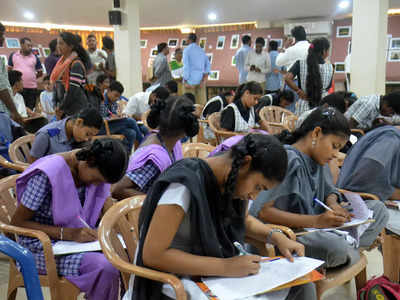
Visual Stories

Updated Aug 13, 2022, 07:54 IST
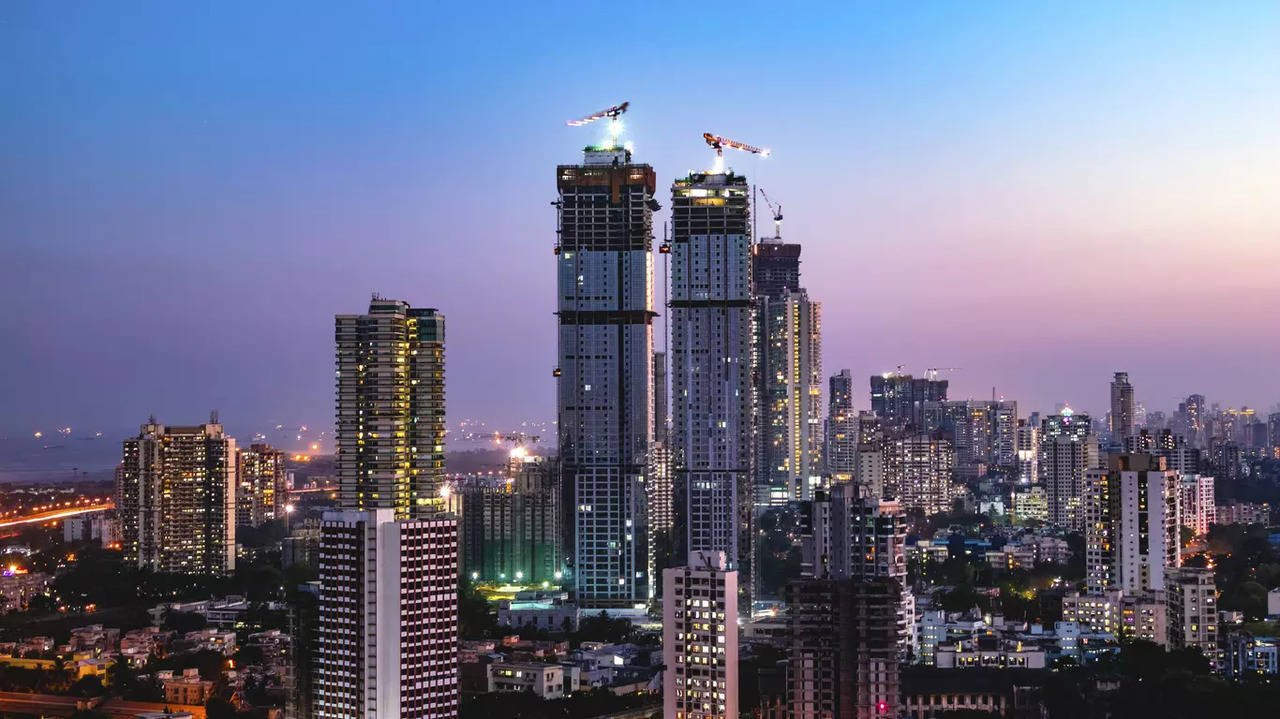
Walt Nauta, Trump’s Aide, Seen Moving Boxes With Classified Documents in Newly Released Court Records

Who Is Christine Ruth Burns, YMCA of Greater Toronto Employee Being Sued For Stealing USD 2.2 Million?

Did Germany Decriminalize Possession Of Child Porn? Fact-Checking Reports

Have You Met Bujji? Prabhas' AI-powered Love In Kalki 2898 AD, Watch Video

What is Purdah or Pre-election Period In The UK?

'Most Intimidating Sight To Have Him...', AB de Villiers Wants MS Dhoni To Captain CSK As Long As He Plays IPL

Horoscope Today: Astrological Predictions on May 23, 2024, for all Zodiac Signs

'Police Will Interrogate My Old And Ailing Parents': Kejriwal's Big Claim Amid Swati Maliwal Case

Tata Group Acquires Walt Disney's Minority Stake In Tata Play For $1 Billion

Ola Shifts All Workloads To In-House AI Firm Krutrim: Read Details

9-Carat Gold Jewellery May Get Hallmarked Soon; But WHY?

Nykaa Q4 Results: Company Reports Strong Earnings With 187 pc Profit Jump

Paytm Q4: 'Expect Near-Term Financial Impact on Our Revenue...' - Vijay Shekhar Sharma's Keynote Address to Shareholders After Quarterly Earnings

COMMENTS
As India steps into the next 75 years, the aim is to build an inclusive, prosperous nation, ensuring a better future for all. 250 Words Essay on 75 Years of Indian Independence Introduction. India, a nation with a rich history, diverse culture, and a promising future, celebrated 75 years of independence in 2021.
In the 75 years of independence, Indian Infrastructure has improved drastically. The overall length of the Indian road network has grown from 0.399 million km in 1951 to 4.70 million km as of 2015, which makes it the third largest roadway network in the world. Additionally, India's national highway system now spans 1, 37, 625 kilometres in 2021 ...
Annual. First time. 15 August 1947 (75 years ago) Started by. Government of India. Related to. Independence Day. Azadi Ka Amrit Mahotsav or 75th Anniversary of Indian Independence was an event, in which the 75th anniversary of the independence of India was celebrated in India and abroad. [1] It was the 76th Independence Day of India.
Azadi ka Amrit Mahotsav is a 75-week grand celebration launched by honorable prime minister Shri Narendra Modi to mark 75 years of Independence भारत सरकार ... (25 years between India@75 and India@100). The world as we knew it is changing and a new world is unfolding. The strength of our convictions will determine the longevity ...
Quit India Movement Anniversary: Ahead Of 75th Independence Day, Know The Story Of Quit India Movement. Essay on Independence Day in 500 words. ... This campaign aims to celebrate 75 glorious years of Independence of India and showcase patriotism. From now on, the Tiranga can be hoisted day and night. ...
75 Years of India's Independence: Let's look at India's 75 years of Journey Post-Independence from 15th August 1947 till now including major historic events, significant achievements ...
This 15th of August, India will celebrate 75 years of Independence. We as Indians pay respect to all the leaders who fought bravely for our nation's freedom in the past.
The celebrations started 75 weeks before our 75th anniversary of Independence and will end on 15th August, 2023. Department of Higher Education and Department of School Education & Literacy have planned various activities under 'आज़ादी का अमृत महोत्सव'.
An India Today Interactive. As India celebrates 75 years of its independence, we take a look back at all India has achieved since it has gained freedom. Successfully copied
Aug 12, 2022, 10:25 IST. 75 Years of Independence Celebration. 75 Years of Independence Celebration: Modern India is an epitome of Scientific and Technological Development and is one of the key ...
The Hindu is marking 75 years of India's Independence with a special issue of articles that cover the nation's birth pangs after Partition, the adoption of Parliamentary democracy and a ...
Bharat Katha, India's Story of Seven and a Half Decade is an initiative of GS SCORE to celebrate India's 75 years of freedom and analyse these 75 years of its glorious history through the lens of all relevant spheres. This series is a detailed source of information about the country's political, social, economic, and cultural traditions since ...
On August 15, India will mark 75 years of its independence. What should be a moment of celebration and joy has become a moment of deep despair and reflection. At independence, India offered a beacon of hope—a multi-everything, secular society choosing democratic governance and a Gandhian vision of inclusion and tolerance.
On Aug 15, 2022, India will commemorate its 75th year of independence from British rule. In this week's issue, a Comment by Vikram Patel and commissioners of The Lancet's Citizens' Commission on Reimagining India's Health System reflects on the country's journey to achieving universal health coverage. The authors outline that although India has seen substantial improvements in many health ...
The day of 15th August 1947 has been embossed in the golden history of India. It is the day when India got its freedom from 200 years of British rule. It was a hard and long struggle in which many freedom fighters and great men sacrificed their lives for our beloved motherland. India celebrates its Independence Day on the 15th of August every year.
Celebrating 75 years of independent India. August 15th, 1947 is etched deep into history and people's collective memory as the day that India achieved independence. Over the last 75 years, India has channeled her civilizational strengths and cultural diversity into a brand new shared future, and opportunities for achievement, progress, and ...
As we enter the 75 th year of independence, India at 75 is a young democracy, aspirational economy and an ageing nation. I am not much worried of the past 75 years but more about the next 25 years.
The 75th Year of Indian Independence Day or Azadi Ka Amrit Mahotsav commemorated the 75 years of India's Independence from colonial rule. It was celebrated on August 15 2022. The 75 years of Independence was celebrated with the theme of Azadi ka Amrit Mahotsav to pay tribute and honor the leaders of the freedom struggle who sacrificed their lives for the welfare of the nation.
India's achievements after 75 years of Independence. India's achievements after 75 Years of India's Independence: India's achivement after August 15th, 1947, has become a prime illustration of a remarkable growth tale.The journey demonstrates India's development in areas such as agricultural production, nuclear and space technology, world-class educational institutions, Ayurveda ...
It has been 75 years since India gained independence and 72 years since the Indian Constitution in the present form came into force. In these years, the constitution has undergone several amendments, and some basic components of it such as the Fundamental rights and DPSPs have also been interpreted variedly, each time making it more inclusive.
India at 75: Perspectives August 14, 2021 04:21 pm | Updated November 22, 2021 09:48 pm IST ... After 74 years of independence, can India truly be counted among the world's freest ...
Palve said that our country completed its 74th year of independence on August 15, 2021, and made its debut in the 75th year of independence. In the last 74 years, the country has made significant ...
1991: The golden phase of the India's economic journey began that year. With the devaluation of the currency, rising fiscal deficit of the government, India's external debt nearly doubled from some $35 billion at the end of 1984-85 to $69 billion by the end of 1990-91. Foreign exchange reserves had dried up to the point that India could ...
Once seen as a likely successor to Iran's Supreme Leader, President Ebrahim Raisi has died in office, leaving the Islamic Republic's hardline establishment facing an uncertain future.